Image
Read More
Our History

As R.J. Reynolds Tobacco Company marks 150 years in 2025, the Reynolds American organization proudly reflects on its deep American roots, first planted by the pioneering spirit of Richard Joshua Reynolds. This legacy of resilience, innovation, and progress has been built alongside generations of hardworking American tobacco farmers—the backbone of their communities and the economy in North Carolina. Steeped in tradition and fueled by American ingenuity, the Reynolds American organization will continue to support our growers and value their perseverance, commitment to community, and pride in their craft. American-founded, American-grown, and committed to the land and people who make it all possible.

Building Family Farming Legacies
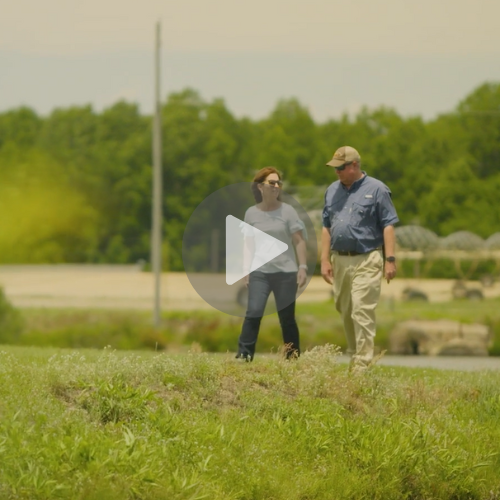
Partnership for the Generations

More Than a Crop
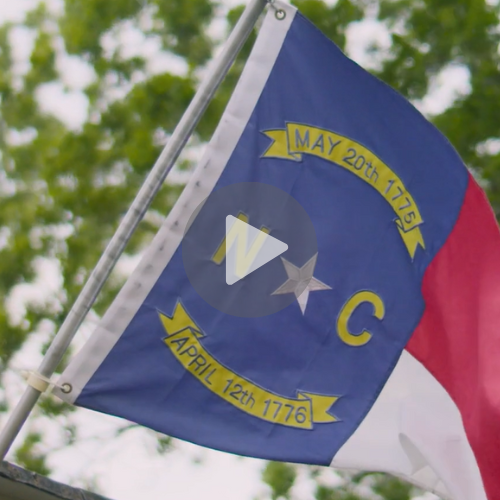
Tobacco Supports Our Family & Our Business
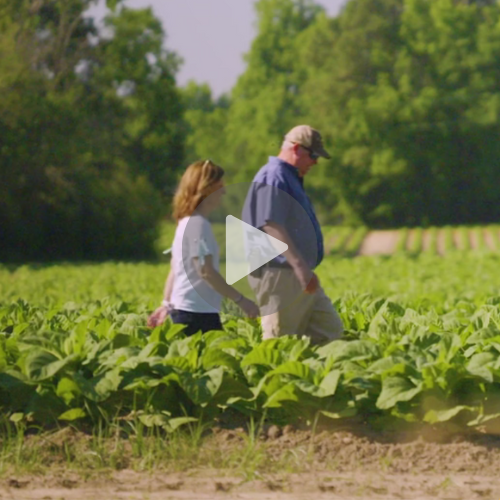
Commitment for the Next 150 Years
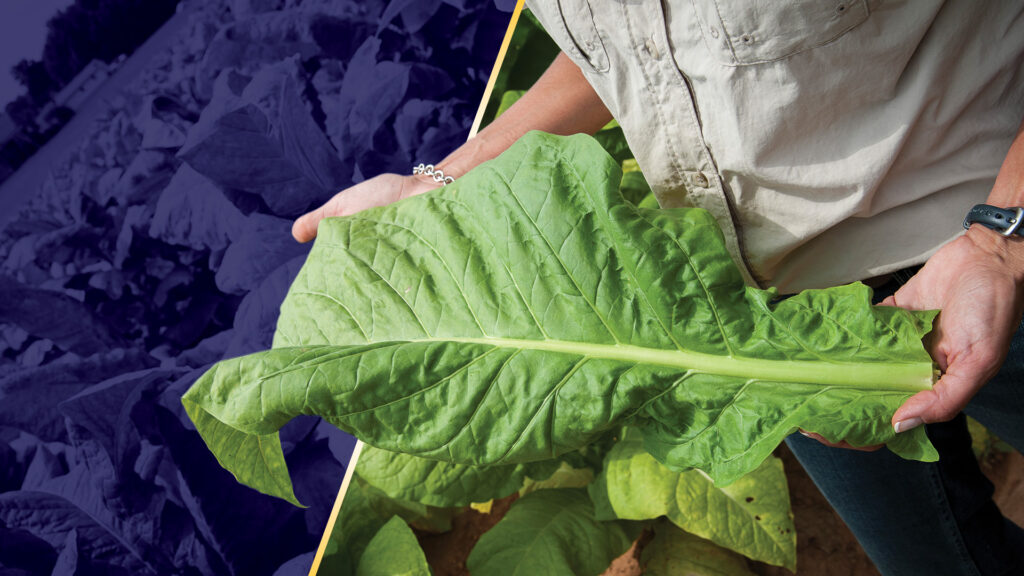
150 Years of Growing North Carolina’s Economy
The Reynolds American organization plays a key role in supporting North Carolina’s tobacco farming efforts. The state leads the nation in tobacco production, generating approximately $75 billion in direct and indirect revenue annually. In addition, North Carolina farmers have seen a 37% increase in contracts from 2024 through 2025 – contracting with hundreds of growers in the United States. In that same period, the Reynolds American organization purchased 65% more tobacco from North Carolina growers.

150 Years of N.C. Manufacturing
Since its founding in 1875, the Reynolds American organization has expanded from the original 4,500 square foot “Little Red Factory” in Winston-Salem, NC, where R.J. Reynolds, a tobacco farmer, started his business, to the 2 million square foot Reynolds Operations Center which opened in 1986 in Tobaccoville, North Carolina. Highlighting its commitment to the American workforce, the Reynolds American organization has invested $200 million in increased North Carolina manufacturing in 2024-2025.

A History of Driving North Carolina Job Growth
Since 1950, the Reynolds American organization has employed more than 100,000 people. A thriving economy requires well-paying jobs. Today the Reynolds American companies support thousands of well-paying jobs in the North Carolina area and beyond, and we continue to add new skills and capabilities to support our transformation. From 2024-2025, 800 new jobs have been created across the Reynolds American organization, employing more than 4,200 people in total. Join our team at ReynoldsAmerican.com/careers.
Timeline
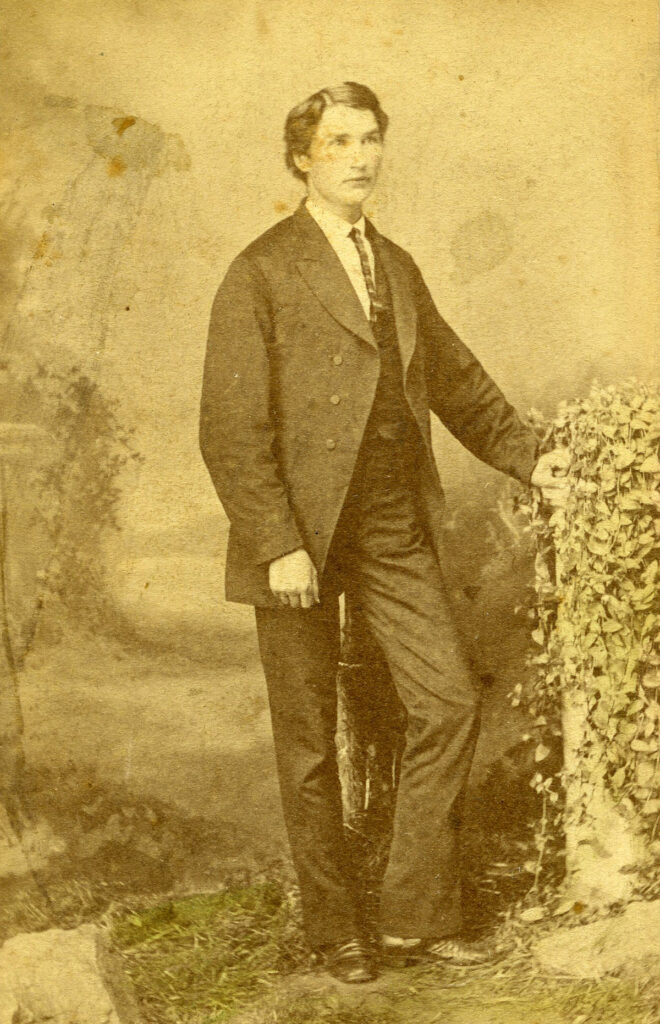
July 20, 1850
Richard Joshua “R.J.” Reynolds was born in Patrick County, Virginia to Nancy Jane Cox Reynolds and Hardin William Reynolds, a successful tobacco farmer and manufacturer.
R.J. Reynolds was one of 16 children and the second oldest son.
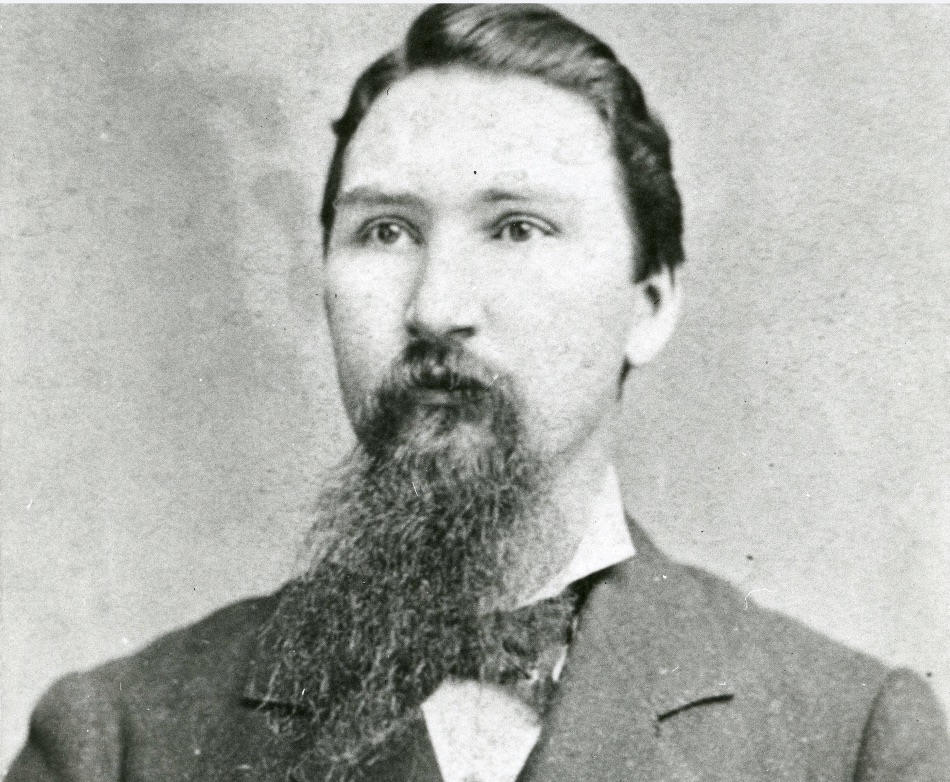
Fall of 1874
At 24, R.J. Reynolds sold his interest in the family tobacco business to his father and left Patrick County to start his own tobacco company.
Some say he came to North Carolina on horseback while others think he drove in a buggy or carriage; it makes little difference because his mind was perhaps occupied with the advantages of a means of transportation more rapid than either – railroad.
At 24, R.J. Reynolds sold his interest in the family tobacco business to his father and left Patrick County to start his own tobacco company.
Some say he came to North Carolina on horseback while others think he drove in a buggy or carriage; it makes little difference because his mind was perhaps occupied with the advantages of a means of transportation more rapid than either – railroad.
Winston was also at the heart of bright or flue-cured leaf, which experienced growers had introduced into Forsyth County as early as 1858.
Throughout most of the 1870’s Winston’s population reputedly stood at 400 to 500 people.
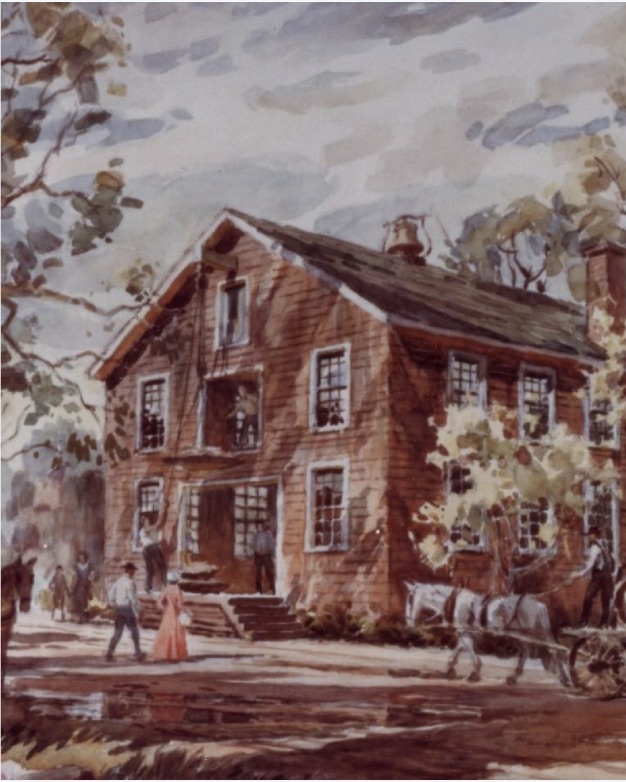
October 19, 1874
R.J. Reynolds purchased a hundred-foot lot on “Depot Street” that extended westward to Chestnut Street for $388.50 and built the “Little Red Factory”, a two-story building that covered less area than a tennis court.
Spring 1875
R.J. Reynolds began his tobacco business manufacturing chewing plug and twist in the 4,500 square foot factory. In 1875, he produced 150,000 pounds of chewing tobacco.
Three manufacturers in Winston were already producing tobacco in 1875.
Between 1875 – 1887 R.J. Reynolds continually expanded his operations and footprint in Winston quickly distinguishing himself among the many other tobacco manufacturers due to his business acumen and innovative techniques, so much so that he was referred to in local newspapers as “R.J.R.”
Between 1875 – 1887 R.J. Reynolds continually expanded his operations and footprint in Winston quickly distinguishing himself among the many other tobacco manufacturers due to his business acumen and innovative techniques, so much so that he was referred to in local newspapers as “R.J.R.” During this timeframe, he expanded his capacity from 150,000 pounds to approx. 2,725,000 pounds.
By 1890, there were over 30 tobacco companies in Winston – many near the R.J. Reynolds Tobacco Company factory. R. J. Reynolds would purchase many of these companies, incorporating their factories into the R.J. Reynolds Tobacco Company Manufacturing compound.
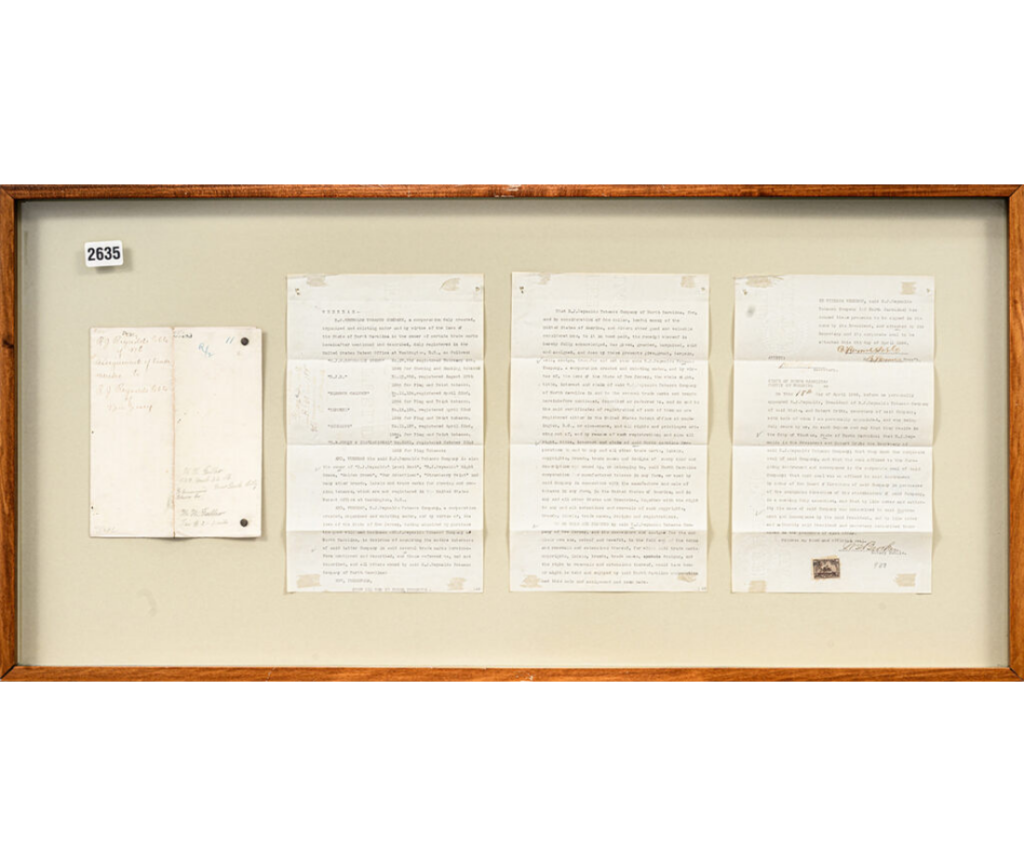
1886
Due to the common use of his initials, Richard Joshua “R.J.” Reynolds registered “R.J.R” as a trademark.
February 11, 1890
R.J. Reynolds Tobacco Company was officially incorporated in North Carolina.
R.J. Reynolds was named President and his brother, Will Neal Reynolds, was named Vice President.
1890s
Women played an important role in the history of R.J. Reynolds Tobacco Company, and it’s noted that “Miss Boogs” was the earliest female with the role of Amanuensis, scribing what others dictated into writing.
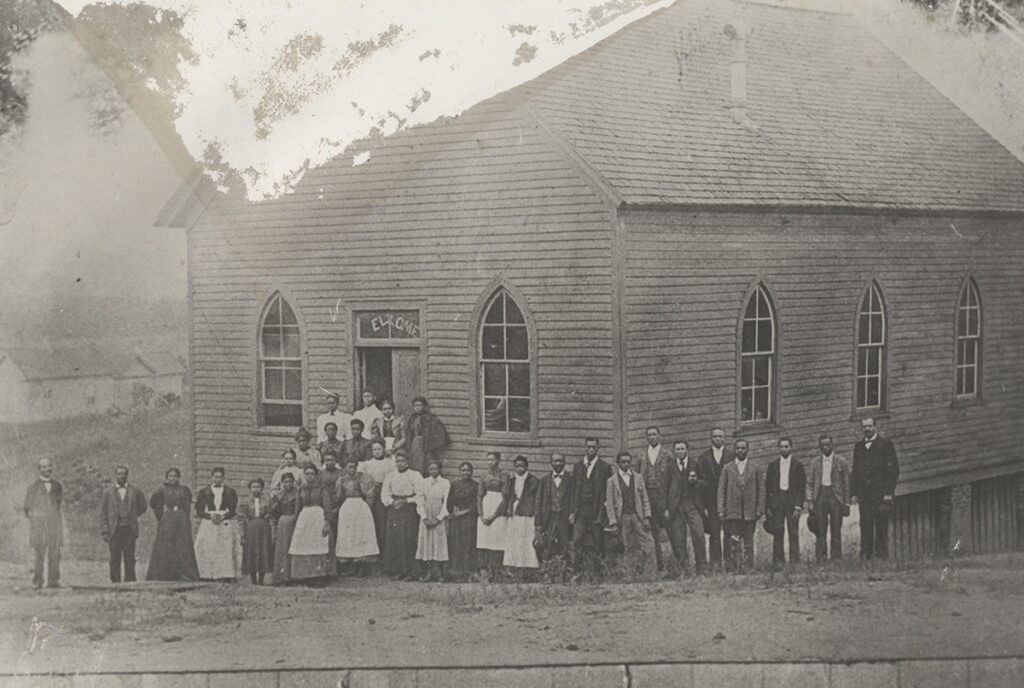
1891
Simon Atkins was seeking assistance to establish an African American college, and with no support from the committee of the Board of Trade, R.J. Reynolds personally contributed the needed $500 to establish The Slater Industrial and State Normal School (now Winston-Salem State University). The school was incorporated on September 28, 1892.
Simon Atkins was seeking assistance to establish an African American college, and with no support from the committee of the Board of Trade, R.J. Reynolds personally contributed the needed $500 to establish The Slater Industrial and State Normal School (now Winston-Salem State University). The school was incorporated on September 28, 1892.
This is known to be R.J. Reynolds first personal cash donation of this nature.
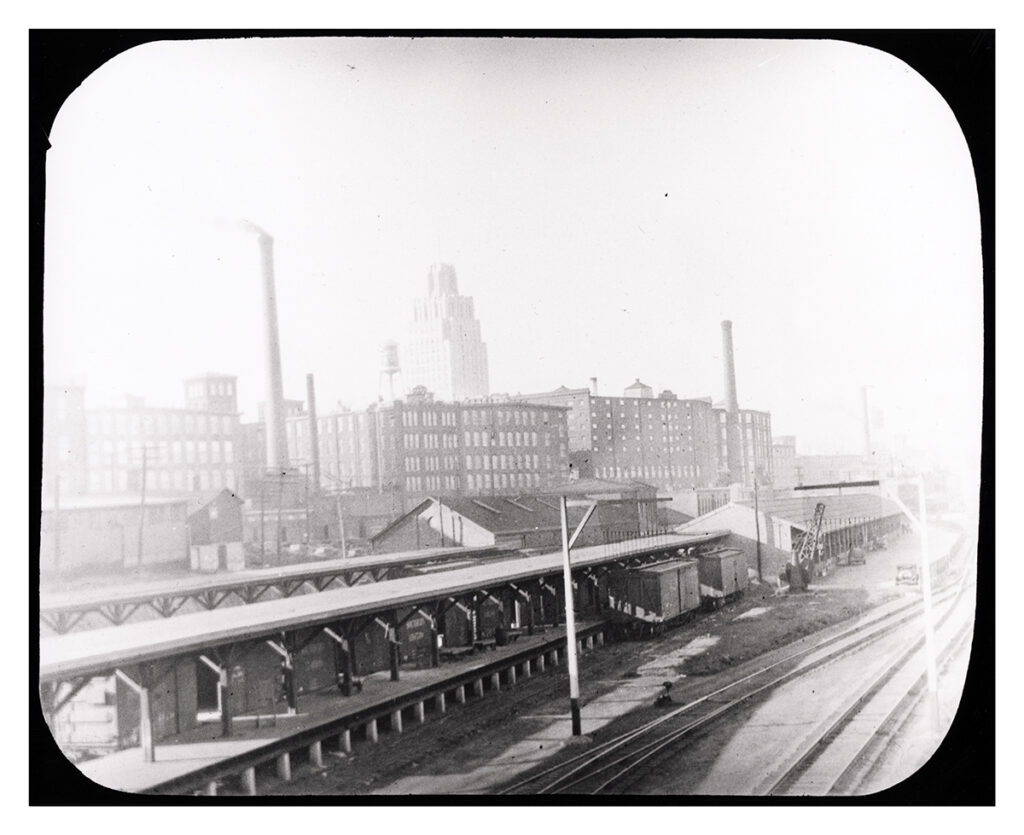
1892
“THE tobacco factory of the South” factory number 256 opened as the largest plug factory in the state complete with steam power, electric lights, and sprinkler system to guard against fire hazards. This “mammoth” modern factory stood six stories high and had a working capacity of 900 hands.
1892
In 1892, Rufus Tucker Stedman was traveling for R.J. Reynolds Tobacco Company, but he also worked in the main office.
On June 6, 1893, the first dedicated salesman, J.W. Young, was hired.
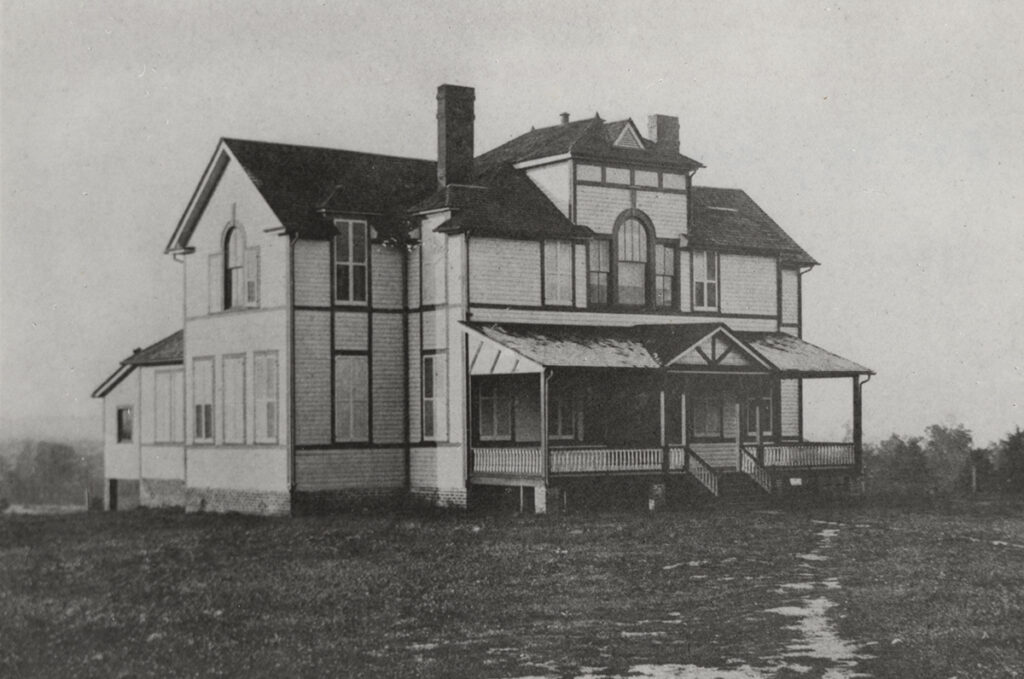
November 11, 1899
R.J. Reynolds and Simon Atkins had an idea to have a hospital and nursing school in keeping with Atkins’ emphasis on education and the need for African American medical professionals. R.J. Reynolds proposed to match $5,000 toward the hospital and nurses training if Simon Atkins could raise a similar amount by January 1, 1901.
R.J. Reynolds and Simon Atkins had an idea to have a hospital and nursing school in keeping with Atkins’ emphasis on education and the need for African American medical professionals. R.J. Reynolds proposed to match $5,000 toward the hospital and nurses training if Simon Atkins could raise a similar amount by January 1, 1901.
Reynolds personally donated $1,665 in cash and 11 acres of land worth $2,000 to establish The Slater Hospital.
The Slater Hospital was the first African American hospital in the South and was formally opened on May 14, 1902, during the Slater School’s ninth commencement.
The Slater Hospital was located on the campus of Slater Industrial Academy and State Normal School (now Winston-Salem State University).
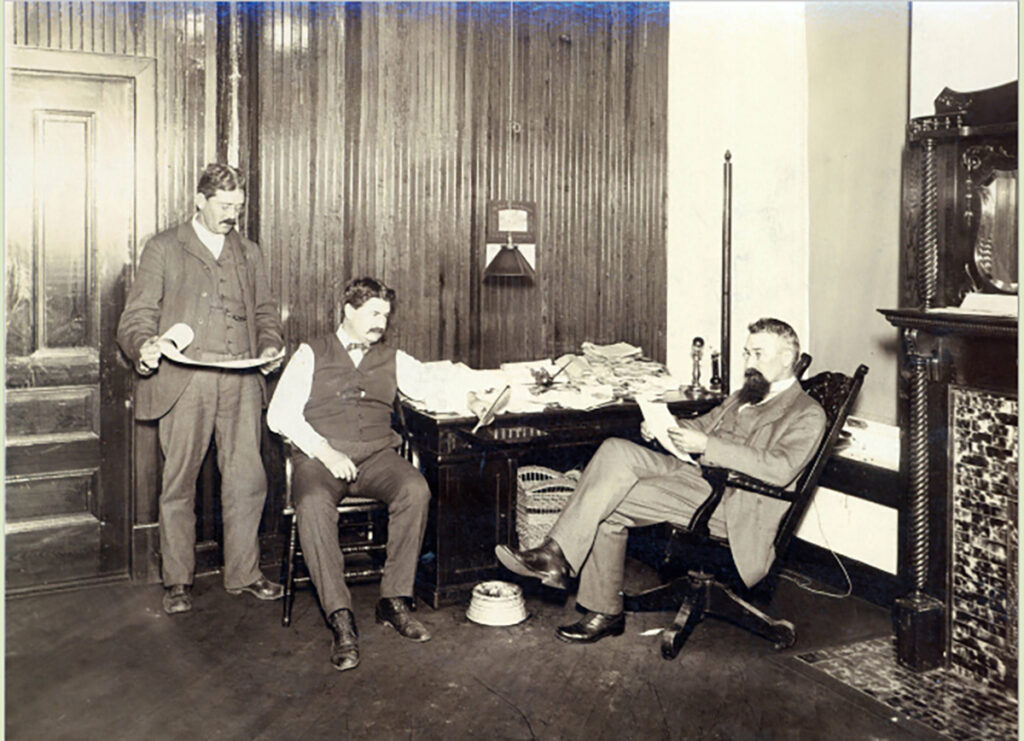
Early 1900s
R.J. Reynolds’ success enabled him to purchase most of the competing tobacco factories in and around Winston. At this time, the company produced approximately 25% of America’s chewing tobacco business.
R.J. Reynolds’ success enabled him to purchase most of the competing tobacco factories in and around Winston. At this time, the company produced approximately 25% of America’s chewing tobacco business.
In the early 1900s, employees were recruited from nearby towns, other parts of North Carolina, and surrounding states. Many African Americans moved from South Carolina to work at Reynolds factories. Due to limited transportation at the time, residences were built near the factories and as a result, many African American businesses were established in the neighborhoods surrounding the factories – cafes, barbers, etc.
During the 1890s, as R.J. Reynolds’ business expanded, his success caught the eye of James Buchannan “Buck” Duke. Duke founded the American Tobacco Company, the third largest corporation in America, and was best known for inventing modern cigarette manufacturing and marketing techniques.
During the 1890s, as R.J. Reynolds’ business expanded, his success caught the eye of James Buchannan “Buck” Duke. Duke founded the American Tobacco Company, the third largest corporation in America, and was best known for inventing modern cigarette manufacturing and marketing techniques.
Duke’s consolidation of several tobacco companies ultimately created a monopoly controlling over 90% of the American cigarette market. In 1899, Duke and the American Tobacco Company absorbed Reynolds’s business, where Reynolds maintained independence under Duke’s control so long as he stayed out of the cigarette business. But “R.J. shared the ability to see what was about to happen in his industry and to take advantage of his foresight” as described in The Guilded Leaf.
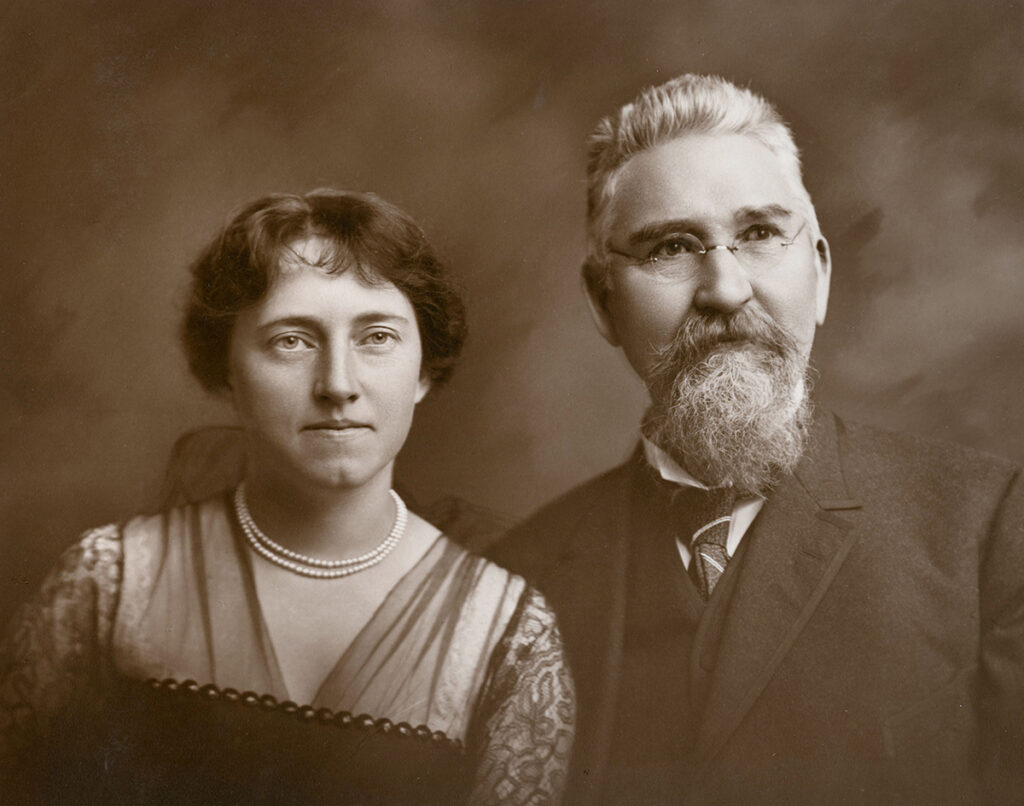
February 27, 1905
R.J. Reynolds married Katharine Smith, in Mount Airy, North Carolina.
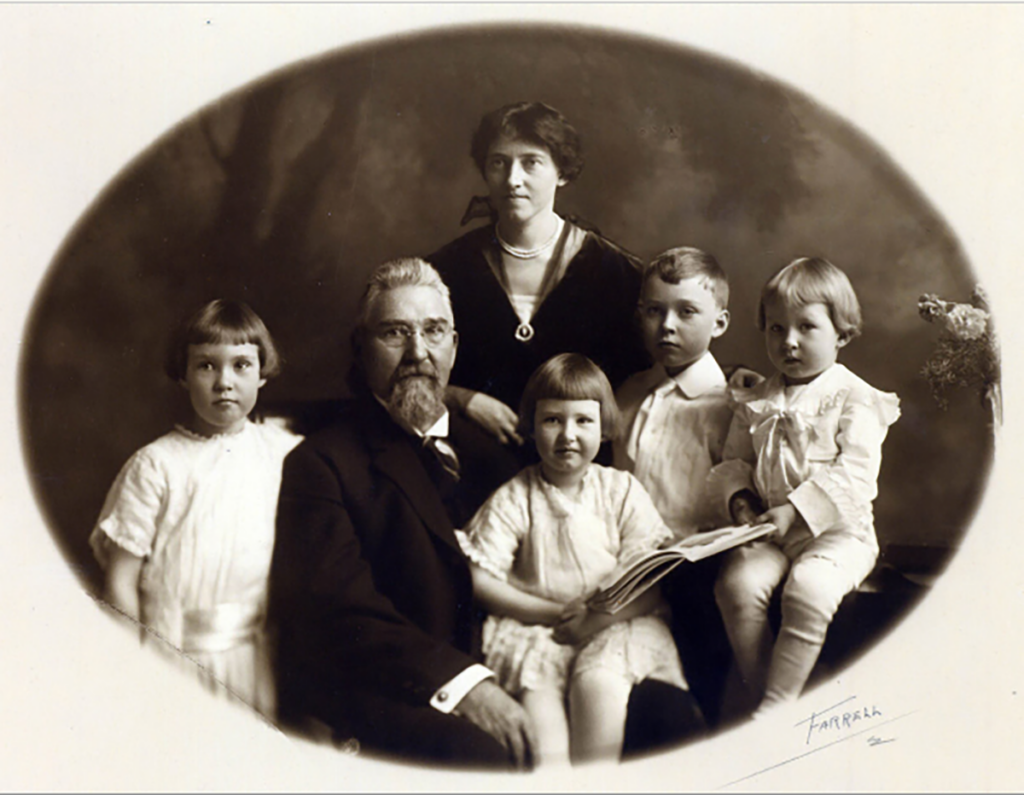
R.J. and Katharine had four children: Richard Joshua, Jr. in 1906, Mary in 1908, Nancy in 1910, and Zachary Smith in 1911.
1907
R.J. Reynolds Tobacco Company introduced a pipe tobacco blend using Kentucky burley, naming it Prince Albert, after the popular Prince of Wales.
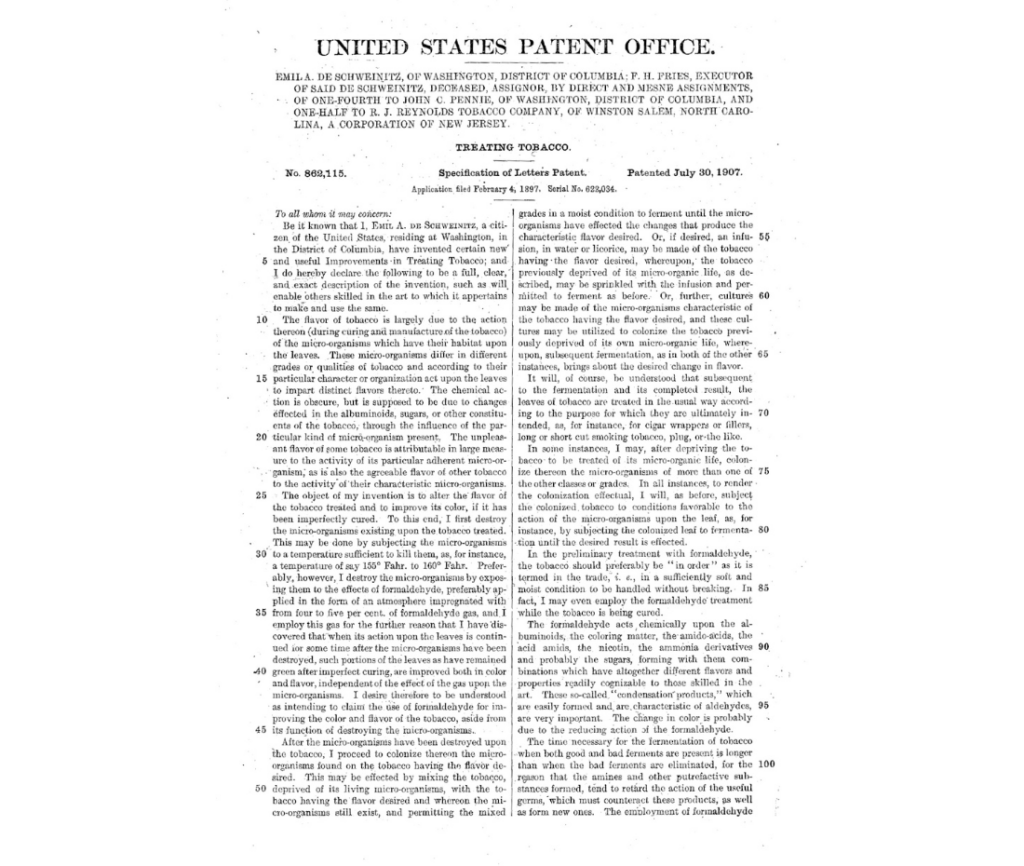
1907
R.J. Reynolds Tobacco Company obtains its first patent, describing a method to treat tobacco for improved color and tobacco flavor.
1911
After five years of litigation, a U.S. Court of Appeals ordered that the “Tobacco Trust” be dissolved. The main manufacturers to emerge, in addition to American, were R.J. Reynolds, Liggett & Myers, and Lorillard. This led R.J. Reynolds to expand the company beyond predominantly plug tobacco.
The inception of a Research and Development (R&D) department was a signal of the company’s growth.
1912
R.J. Reynolds Tobacco Company employees were offered “A” stock, later known as “Anticipation” stock, for significantly less than the stock price on the open market.
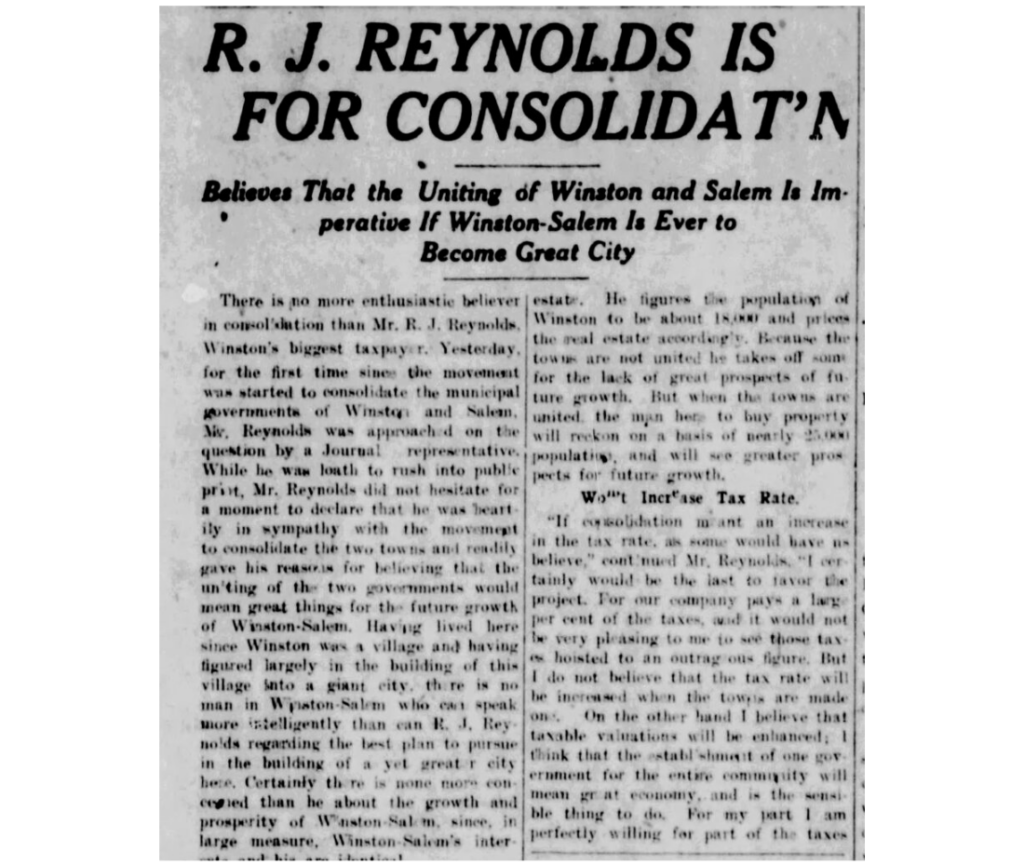
1913
In the 1880s, the U.S. Post Office began referring to the two towns of Winston and Salem as Winston-Salem. After nearly a decade, the U.S. Post Office Department established the Winston-Salem post office in 1899. The towns were officially incorporated as Winston-Salem in 1913.
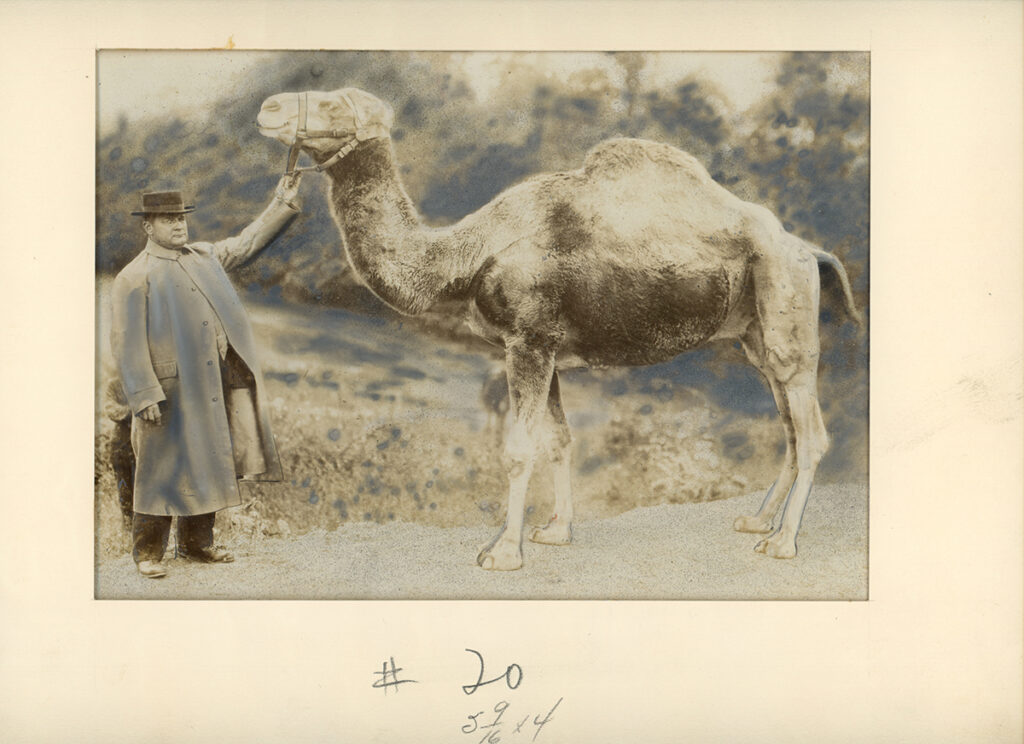
September 29, 1913
Various stories about the Camel name exist, however the photo used for appearance of the camel design is uncontested.
Various stories about the Camel name exist, however the photo used for appearance of the camel design is uncontested.
Roy C. Haberkern, secretary to R.J. Reynolds, went to the Barnum & Bailey Circus while it was in Winston-Salem to photograph both a camel and a dromedary (one humped camel). The dromedary was known by the circus as “Old Joe” and was reproduced for the Camel label by A. Hoen and Company ad agency.
The photo of Roy C. Haberkern and “Old Joe” was taken by Andrew Jackson Farrell, a Winston-Salem based photographer.
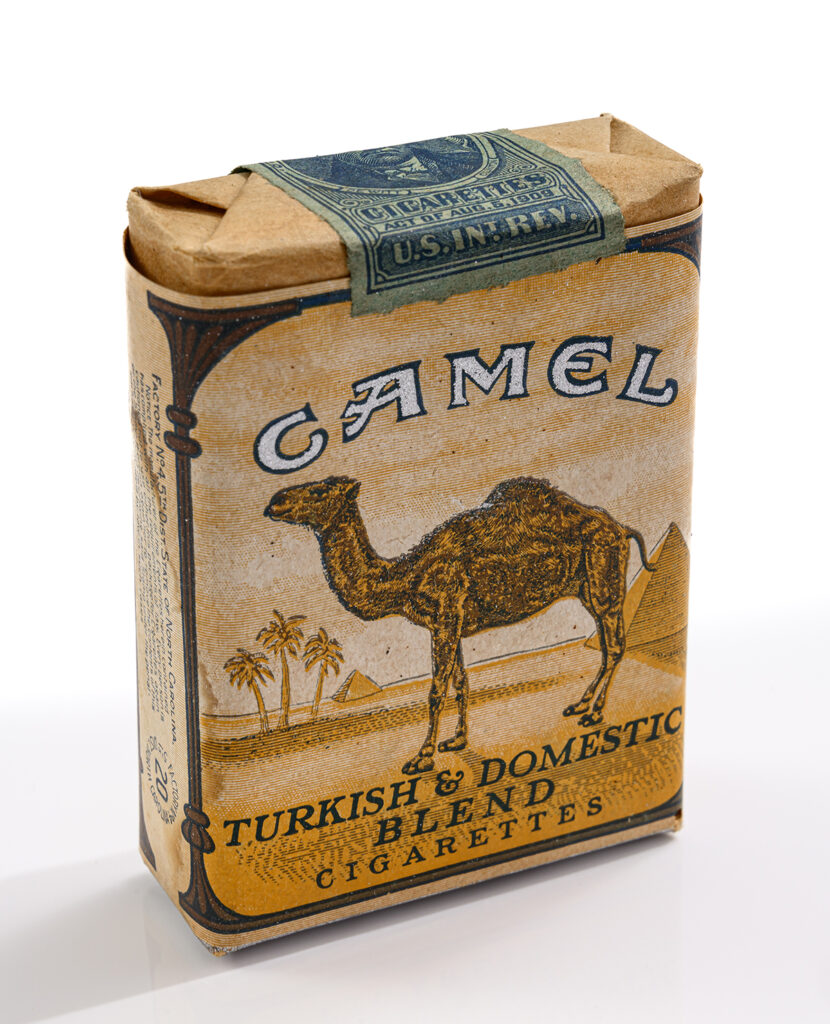
1914
CAMEL was the first packaged cigarette and the first American Blended Cigarette on the market and in 1914 CAMEL became the first cigarette to be distributed nationally.
In 1925 over 34 billion Camel cigarettes were made, accounting for 43% of all cigarettes sold in the United States. In 1951, over 100 billion Camels were manufactured in RJRT downtown factories.
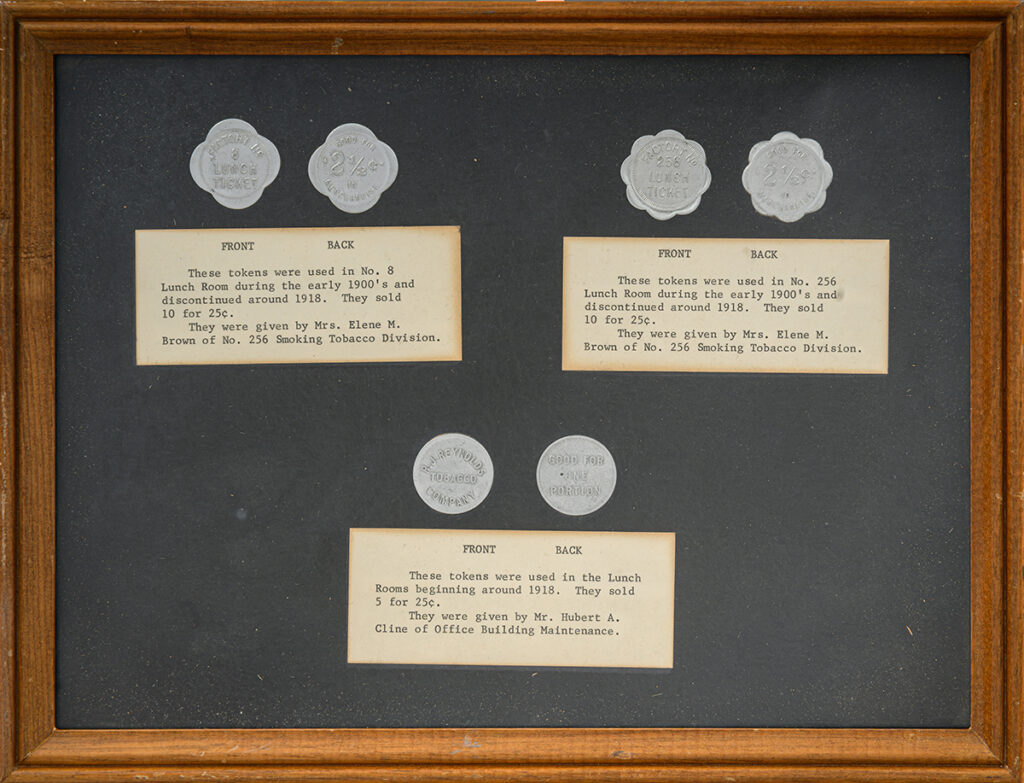
1915
A rest room and lunchroom for white women were introduced in Number 256, followed by a lunchroom for African American employees in Number 8.
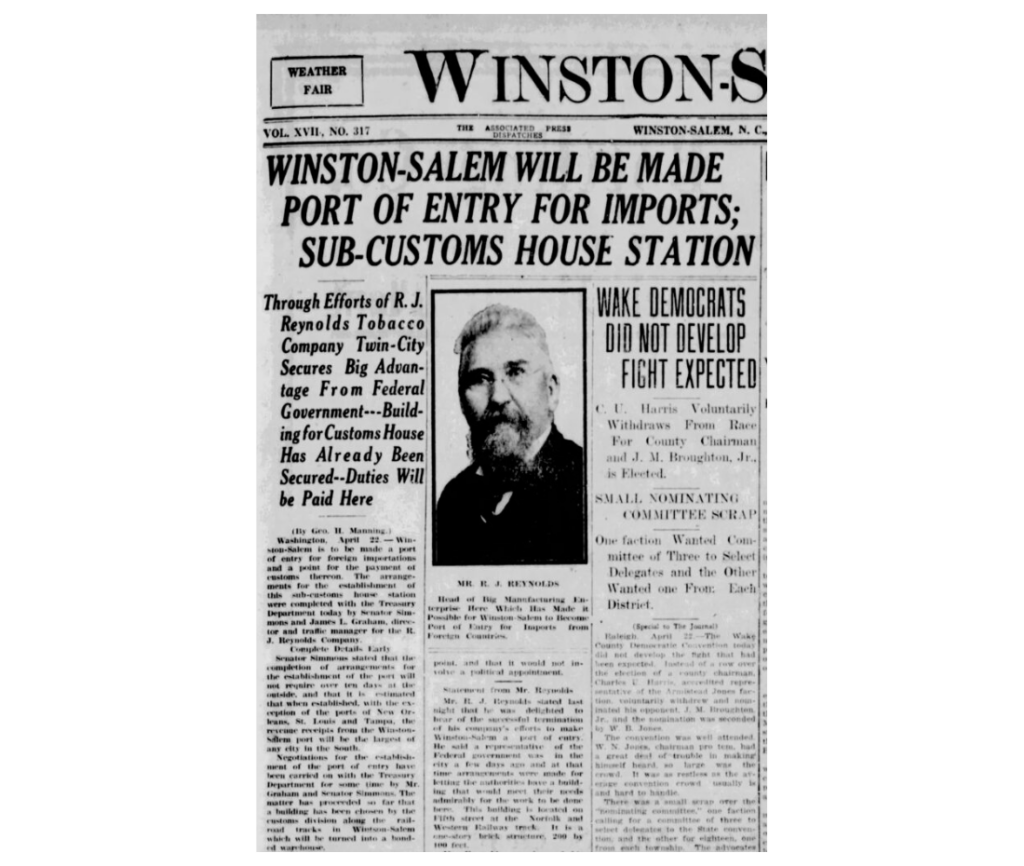
1916
Winston-Salem became the eighth-largest port of entry for goods in the United States despite being 200 miles inland. It was also the largest port of entry in the South at the time.
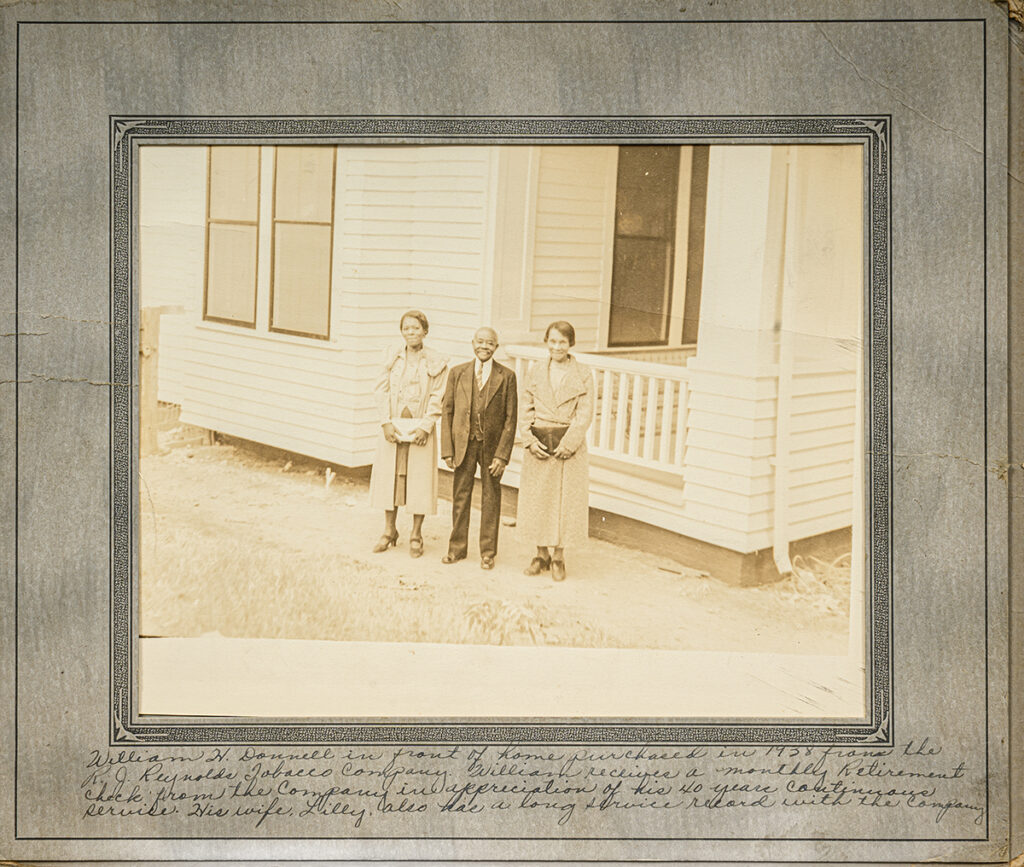
1917
R.J. Reynolds Tobacco Company purchased 84 acres of property in Winston-Salem and built 180 houses that were sold ‘at cost’ to workers. This was known as “Reynoldstown.”
The second phase of Reynoldstown was from 1937 – mid-1940s, a result of the sale of R.J. Reynolds Tobacco Company houses to private owners.
1917
Due to the shortage of tin in WWI, by the end of 1917, Camel Cigarettes were being packed without tinfoil.
July 19, 1918
R.J. Reynolds died at his home, Reynolda House, less than a year after he and the family moved in. He was 68.
R.J. Reynolds served as CEO for 43 years and remains the longest serving CEO in the company’s history.
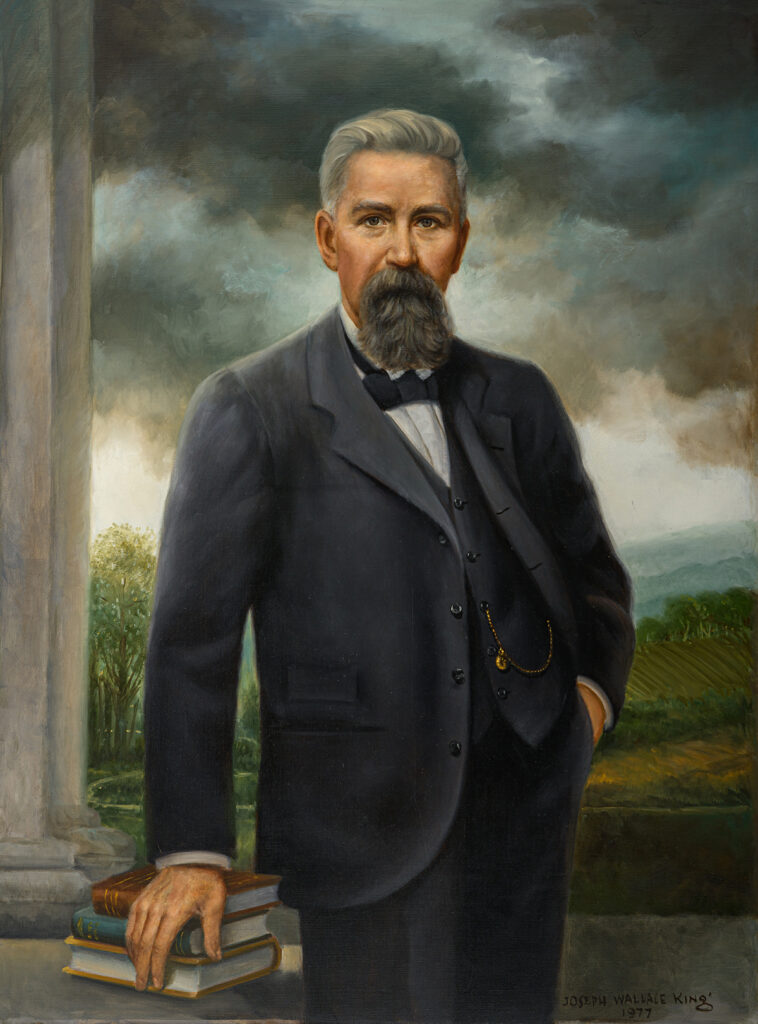
At the time of his death, Reynolds was the wealthiest man in North Carolina; his $66,000 paid annually in taxes was double the next highest taxpayer.
After his death, R.J. Reynolds brother, William Neal Reynolds assumed control of the company. However, executives did not hang another CEO’s portrait next to Reynolds in the company board room until 41 years later.
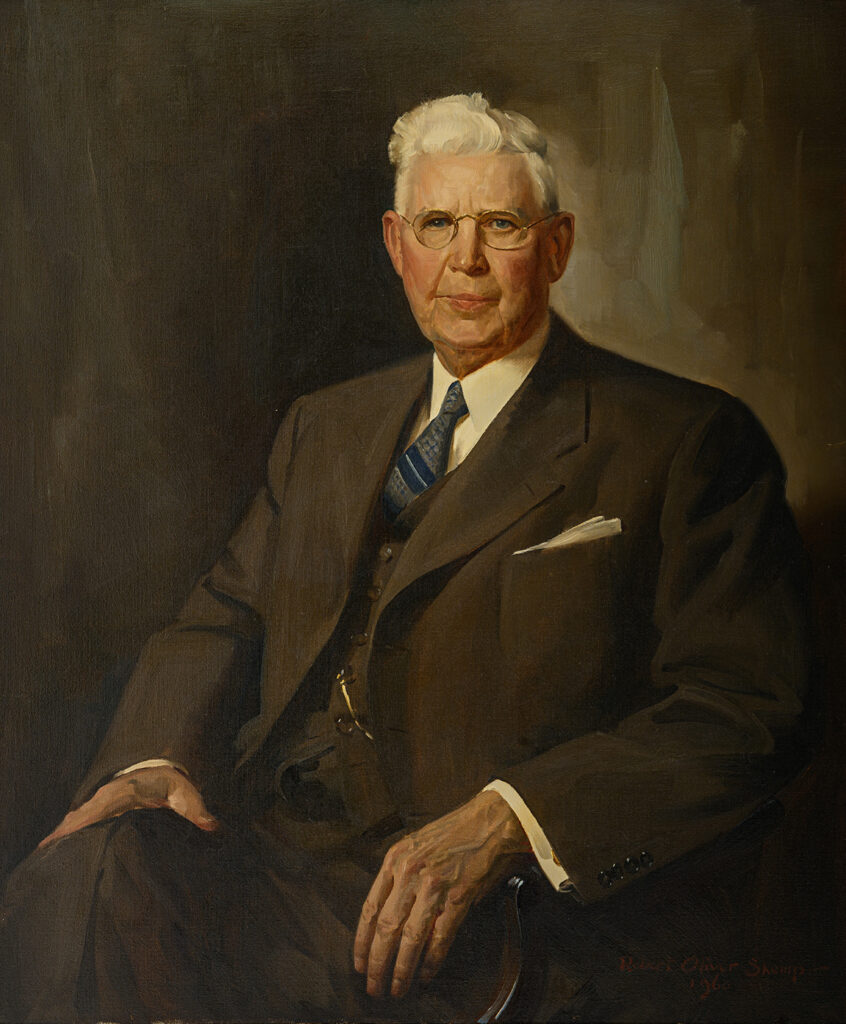
August 2, 1918
William N. Reynolds, “Mr. Will” as he was called, took over the Presidency of the company after his brother’s death in 1918 and became the first chairman of the board in 1924.
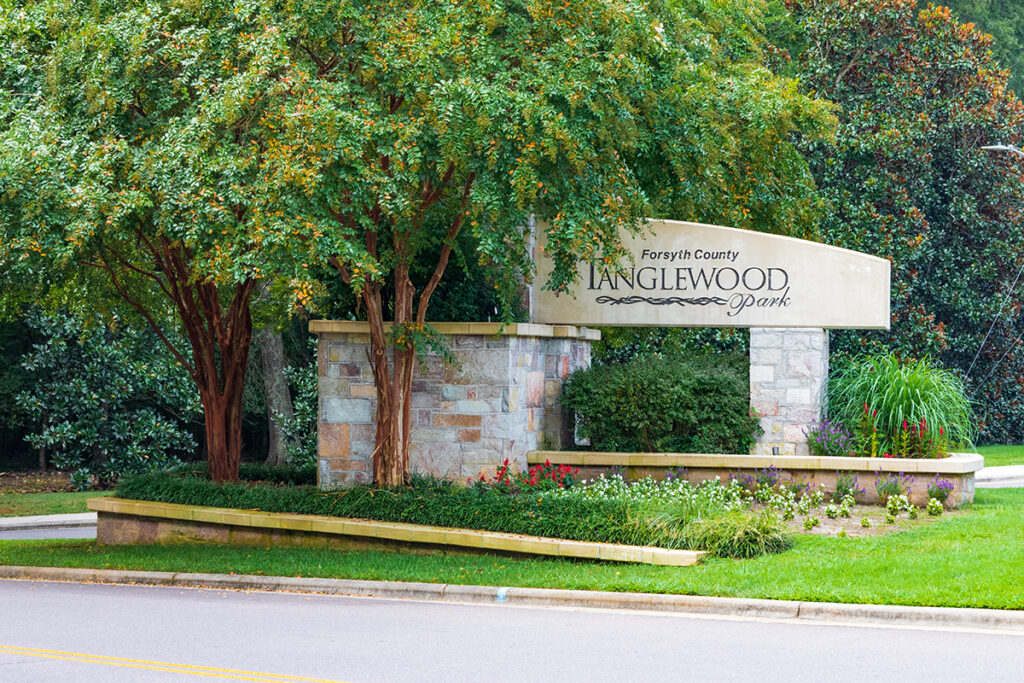
Will Reynolds held the position of CEO for six years and continued the R.J. Reynolds Tobacco Company’s growth by focusing on Prince Albert and Camel. In the year following R.J.s death, the R.J. Reynolds Tobacco Company delivered a 200% dividend on new categories of stocks.
Will Reynolds held the position of CEO for six years and continued the R.J. Reynolds Tobacco Company’s growth by focusing on Prince Albert and Camel. In the year following R.J.s death, the R.J. Reynolds Tobacco Company delivered a 200% dividend on new categories of stocks.
William became better known for his life outside of the company. After R.J.s widow Katharine died in 1924, William and his wife, Kate G. Bitting raised R.J. and Katharine’s four children at the home they built, Reynolda Estate.
William became the first President of Forsyth Country Club and helped to commission a nine-hole golf course and ultimately hired Donald Ross to design an 18-hole course that was completed in 1923 and is still the foundation of the famed links today.
In 1921, William purchased the 1,117-acre country estate on the Yadkin River, Tanglewood Park and Arboretum and Rose Garden where he and wife Kate began the extensive plantings including the 800-bush Rose Garden on the Manor House lawn. In 1951, Will and Kate Reynolds willed Tanglewood to Forsyth County for use as a public recreational park.
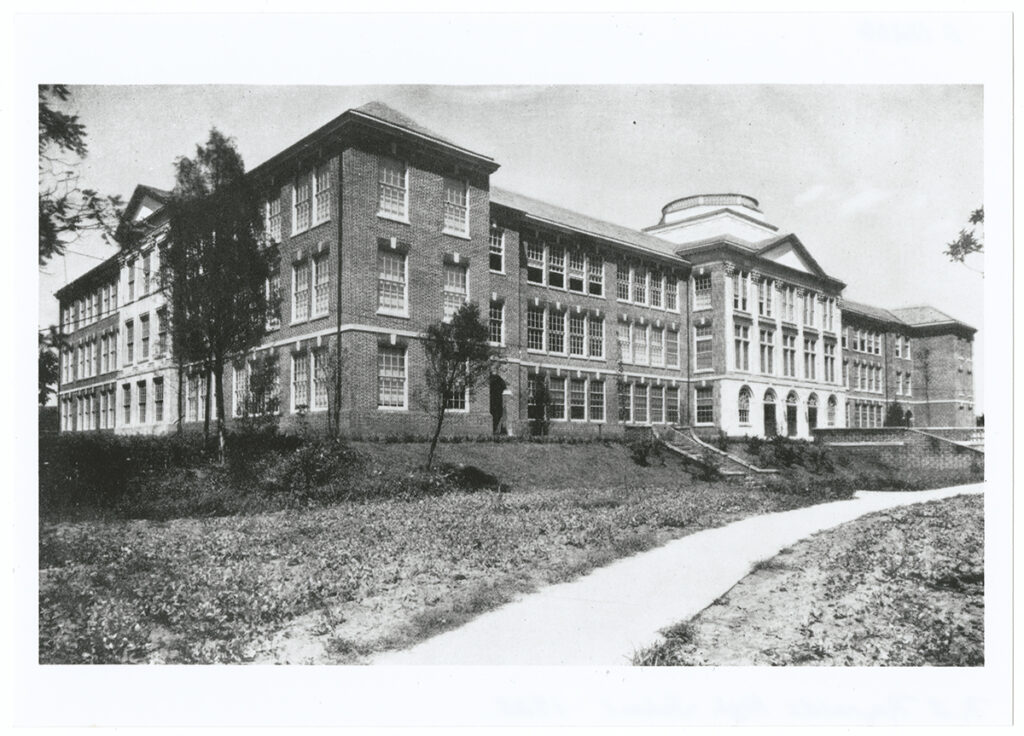
1919
In memory of her first husband, R.J. Reynolds, Katharine donated funds and land for the creation of the R.J. Reynolds High School to honor the man that was so interested in the development of the city.
In memory of her first husband, R.J. Reynolds, Katharine donated funds and land for the creation of the R.J. Reynolds High School to honor the man that was so interested in the development of the city.
A festival and dedication of the Memorial Auditorium was held just weeks before Katharine’s death. Her public memorial service was held in the same auditorium.
March 16, 1922
R.J. Reynolds Tobacco Company was listed on the New York Stock Exchange and granted permission to use “RJR” as its ticker symbol.
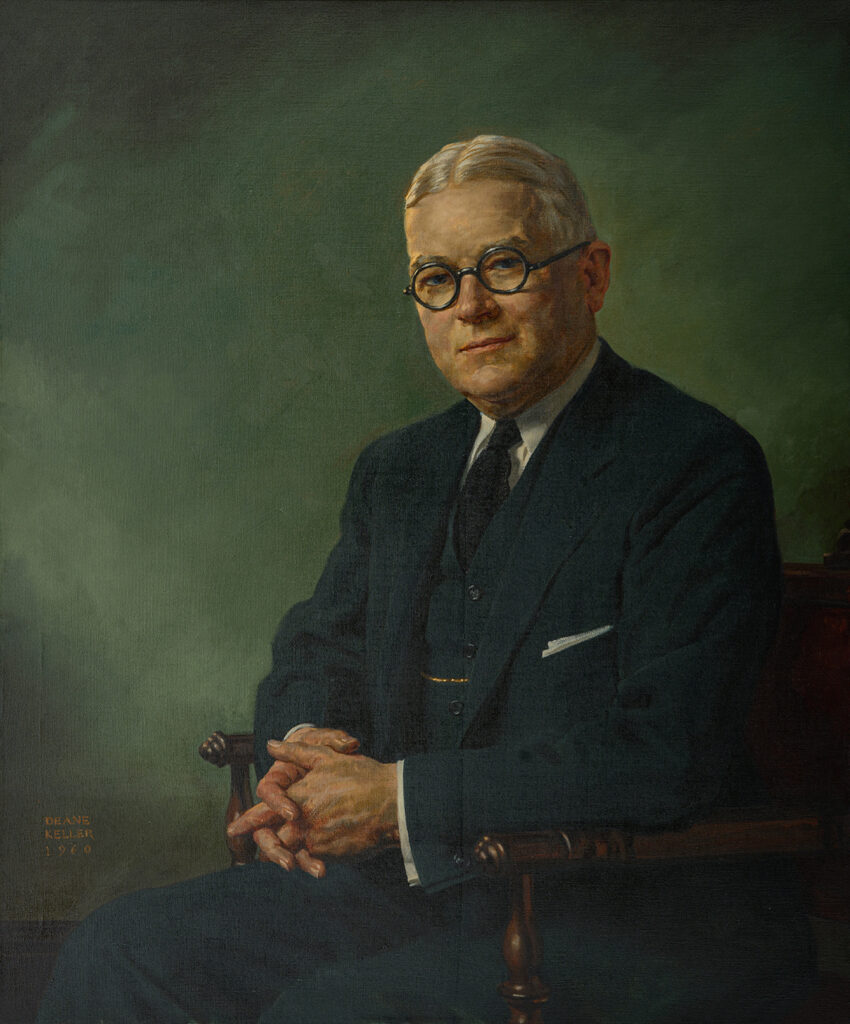
April 8, 1924
Bowman Gray, Sr. was appointed to CEO.
Born in Winston, North Carolina to Wachovia co-founder James Alexander Gray and Aurelia (Bowman) Gray, Bowman Gray, Sr. left his position at Wachovia National Bank to become a salesman for R.J. Reynolds Tobacco Company where he proved to be a standout, ultimately being named the Vice President of Sales in 1912.
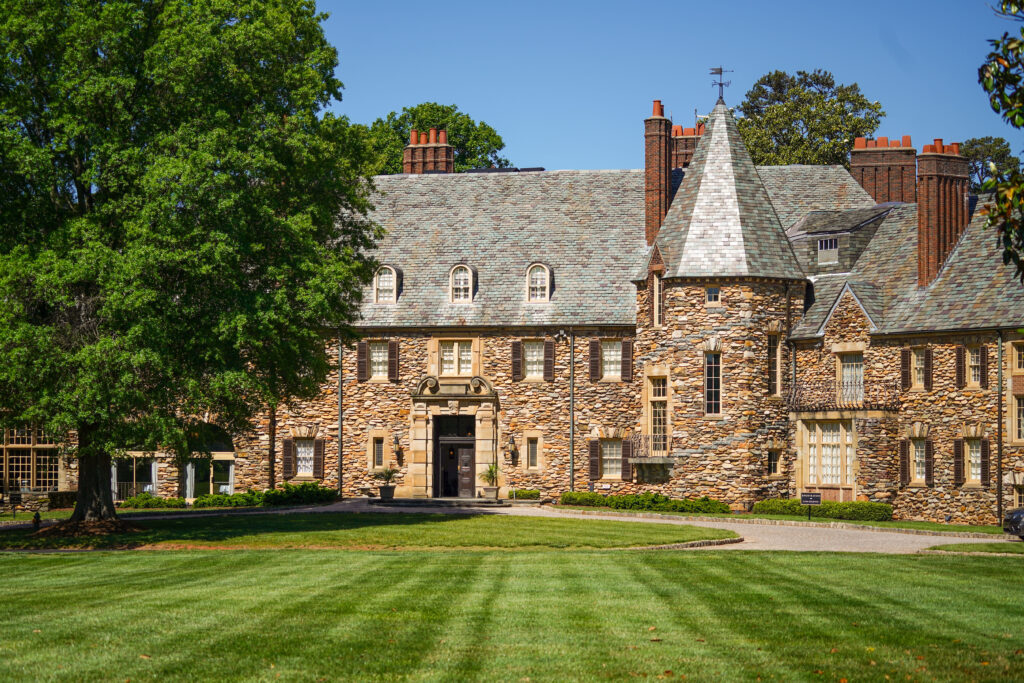
Between 1927 and 1932, Bowman Gray, Sr. and his wife Nathalie, oversaw the construction of Graylyn, their 87-acre estate across from R.J. Reynolds home estate, Reynolda House. The Gray family moved into the Manor House in 1932 and with approximately 60 rooms, Graylyn was one of the largest homes in North Carolina at the time, second only to Biltmore.
Between 1927 and 1932, Bowman Gray, Sr. and his wife Nathalie, oversaw the construction of Graylyn, their 87-acre estate across from R.J. Reynolds home estate, Reynolda House. The Gray family moved into the Manor House in 1932 and with approximately 60 rooms, Graylyn was one of the largest homes in North Carolina at the time, second only to Biltmore.
Two years after moving to Graylyn, Bowman Gray, Sr. died of a heart attack while vacationing with his family aboard a ship off the coast of Norway. He was buried at sea.
Like R.J. Reynolds, Gray donated to numerous philanthropic causes. At the time of his death in 1935, he left $750,000 worth of stock in R.J. Reynolds Tobacco Company to be used for causes beneficial to the community. His brother (James Gray, Jr.), wife (Nathalie), and two sons (Bowman Gray Jr. and Gordon Gray) eventually decide to donate it to a medical school willing to relocate to Winston-Salem. Wake Forest College, then located in Wake Forest, North Carolina, agreed to move its two-year medical school and expand it to a four-year curriculum, partnering with North Carolina Baptist Hospital. The Bowman Gray School of Medicine opened in 1941.
1928
The company’s first diversification was bringing tin foil for cigarette packaging inhouse. The plant was expanded in 1929 and the company began selling foil to outside customers.
This diversification allowed the company to achieve packaging cost savings and encouraged them to pursue additional packaging businesses.
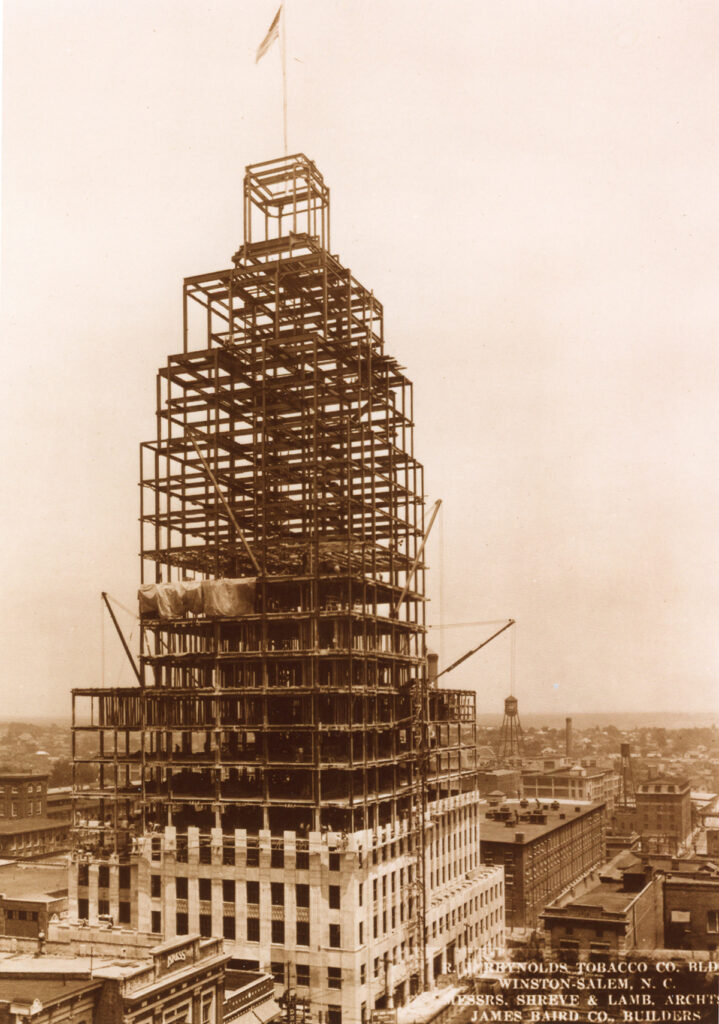
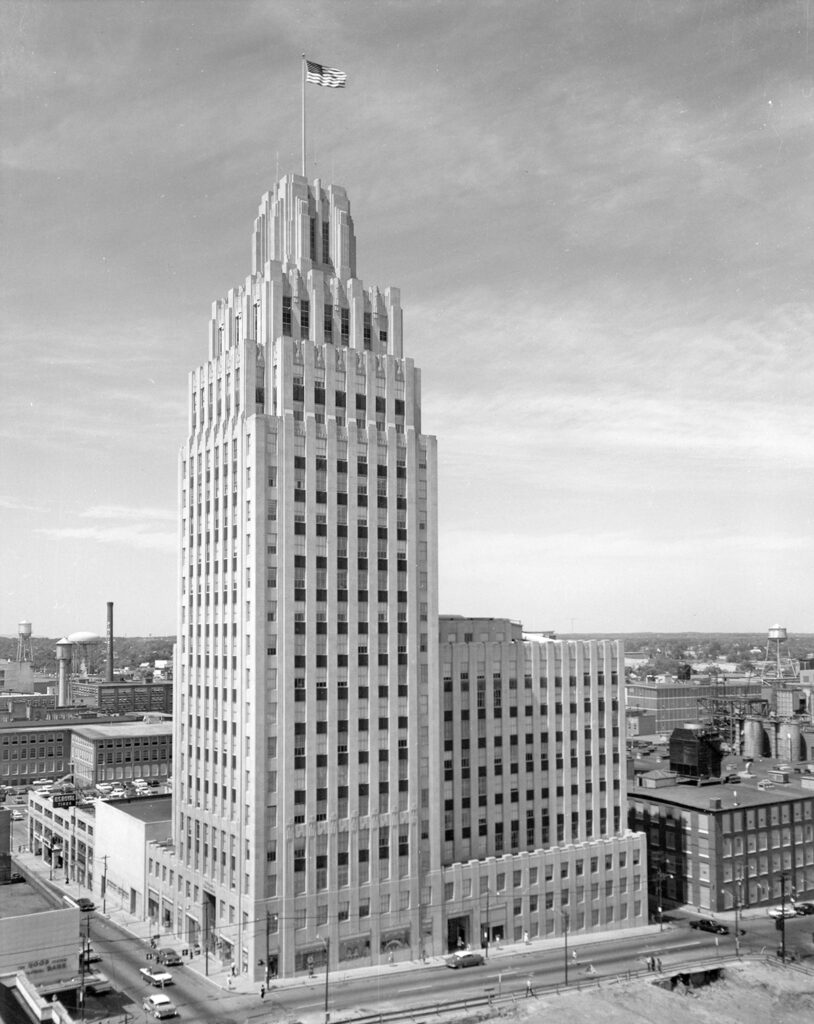
April 23, 1929
The 314-foot Art Deco skyscraper opens as R.J. Reynolds Tobacco Company headquarters. Designed by Shreve & Lamb, well-known New York architects.
Shreve & Lamb, used this building as architectural inspirations for New York City’s Empire State Building.
The 314-foot Art Deco skyscraper opens as R.J. Reynolds Tobacco Company headquarters. Designed by Shreve & Lamb, well-known New York architects.
Shreve & Lamb, used this building as architectural inspirations for New York City’s Empire State Building.
The R.J. Reynolds Building, now the Kimpton Cardinal Hotel, was the R.J. Reynolds Tobacco Company headquarters for more than 50 years.
- The final cost of construction was $2.7 million; today’s equivalent of ~$50M.
- At time of completion, the R.J. Reynolds was the tallest building between Baltimore, MD, Birmingham, AL , and the Miami-Dade County Courthouse.
- There is no 13th floor in the R.J. Reynolds building because of superstition during construction. This remains today.
- In 1956, air conditioning was added, and electronically operated elevators were installed in 1962.
December 3, 1929
Group insurance takes effect offering a retirement plan, group life, total and permanent disability, and accident and health insurance. Employees adopted of these benefits with 98% approval, although only 75% was required for final adoption.
Group insurance takes effect offering a retirement plan, group life, total and permanent disability, and accident and health insurance. Employees adopted of these benefits with 98% approval, although only 75% was required for final adoption.
R.J. Reynolds Tobacco Company was one of the earliest companies in the United States to offer such benefits.
1931
Camel cigarettes are the first in the industry to be packaged with a moisture-proof, sealed cellophane outer wrap to preserve freshness.
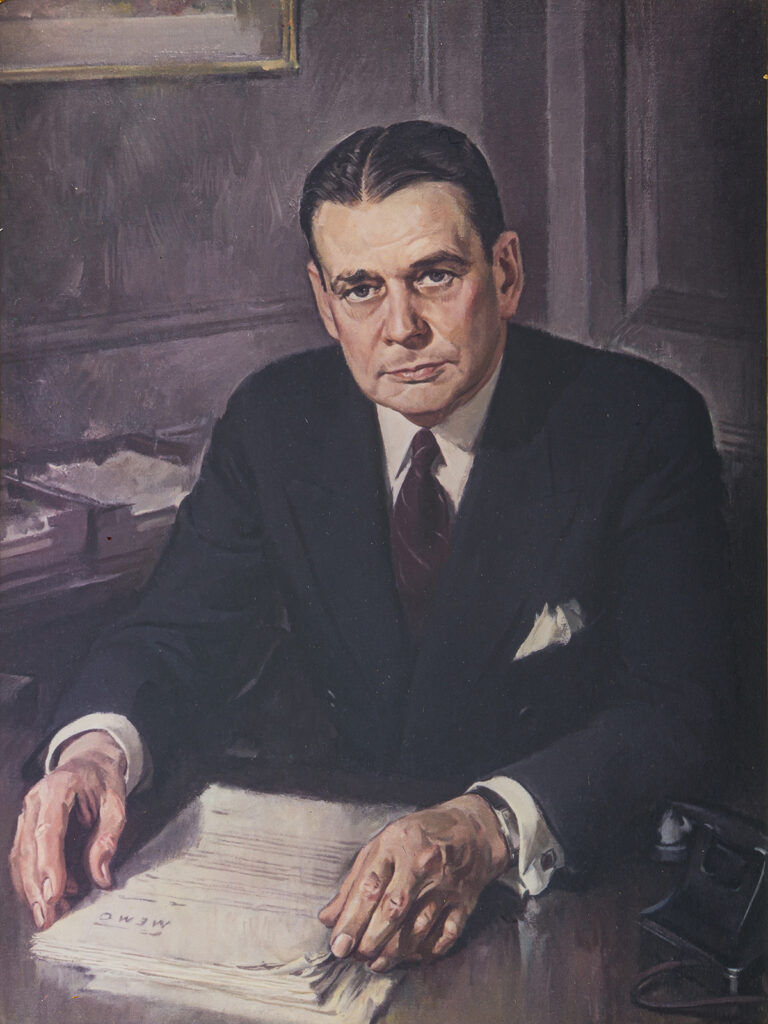
1931 - 1934
S. Clay Williams
In 1917, at Richard J. Reynolds’s personal invitation, Williams moved to Winston-Salem to become assistant general counsel for the R. J. Reynolds Tobacco Company and was responsible for the evolution of trading Class A stock, preferred stock, and Class B Common Stock – in total authorized capital was raised to $40M (~$985M in today’s value).
S. Clay Williams
In 1917, at Richard J. Reynolds’s personal invitation, Williams moved to Winston-Salem to become assistant general counsel for the R. J. Reynolds Tobacco Company and was responsible for the evolution of trading Class A stock, preferred stock, and Class B Common Stock – in total authorized capital was raised to $40M (~$985M in today’s value).
He subsequently was general counsel (1921–25), vice-president and general counsel (1925–31), president (1931–34), and vice-chairman of the board (1934–35). He was chairman of the board from 1935 until his death 14 years later.
1934 - 1946
James Alexander Gray
James A. Gray followed his brother, Bowman Gray Sr., to R.J. Reynolds Tobacco Company from Wachovia in 1920. As Vice President, James A. Gray was responsible for listing R.J. Reynolds Tobacco Company on the New York Stock Exchange. As President, he was the second longest serving President of R.J. Reynolds Tobacco Company since R.J. himself.
James Alexander Gray
James A. Gray followed his brother, Bowman Gray Sr., to R.J. Reynolds Tobacco Company from Wachovia in 1920. As Vice President, James A. Gray was responsible for listing R.J. Reynolds Tobacco Company on the New York Stock Exchange. As President, he was the second longest serving President of R.J. Reynolds Tobacco Company since R.J. himself.
Prior to joining R.J. Reynolds Tobacco Company, he served as a North Carolina state senator for two terms from 1917 – 1920, where he co-introduced North Carolina’s first state income tax.
On October 29, 1952, Gray died of a heart attack at the age of 63.
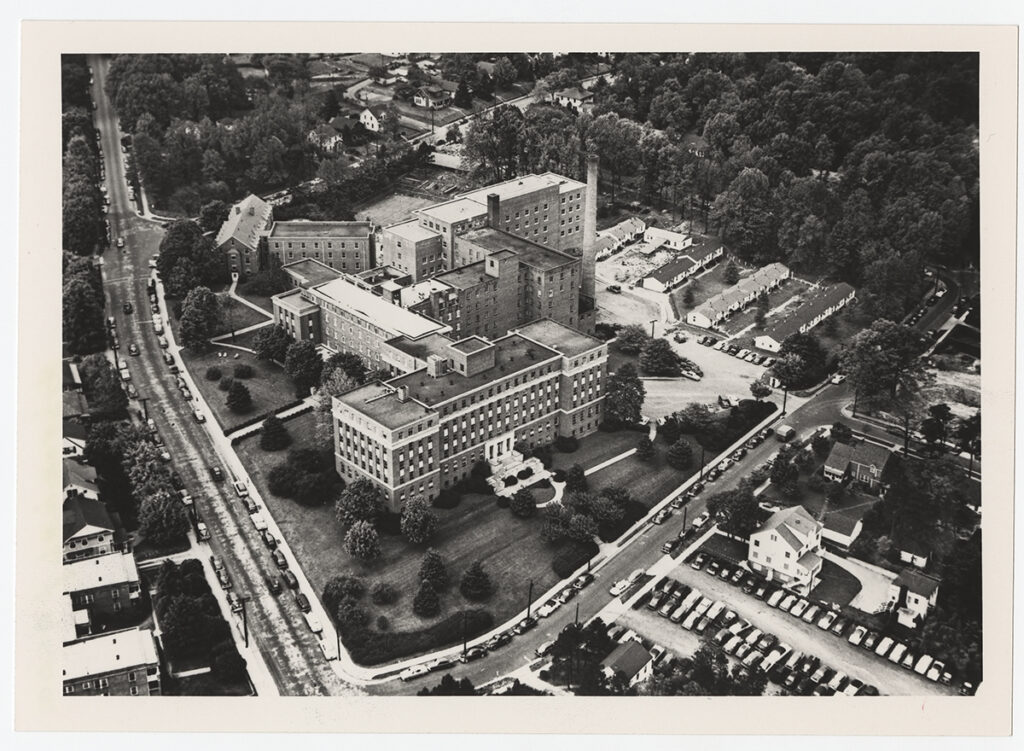
The Winston-Salem Journal wrote:
“The death of James A. Gray casts a pall of sadness over this community and the entire State. Few have done more to advance the economic progress and promote the social welfare of Winston-Salem, Forsyth County and North Carolina as a whole . . .”
The Winston-Salem Journal wrote:
“The death of James A. Gray casts a pall of sadness over this community and the entire State. Few have done more to advance the economic progress and promote the social welfare of Winston-Salem, Forsyth County and North Carolina as a whole than this quiet, unassuming business, civic and religious leader who for over forty years was an inspiring, dynamic influence in the life of the community and commonwealth.”
Like his brother James left behind a legacy of philanthropy. He was inspired to do so after his brother Bowman’s unexpected death at sea from a heart attack in 1935. Gray worked with other family members to fulfill Bowman’s wish that Wake Forest University establish a four-year medical school, and in 1941, the Bowman Gray School of Medicine opened on property donated by the Gray family, with funds bequeathed in Bowman’s will. Gray later established the J.A. Gray Endowment for the Winston-Salem Foundation in 1947 with $1.7 million.
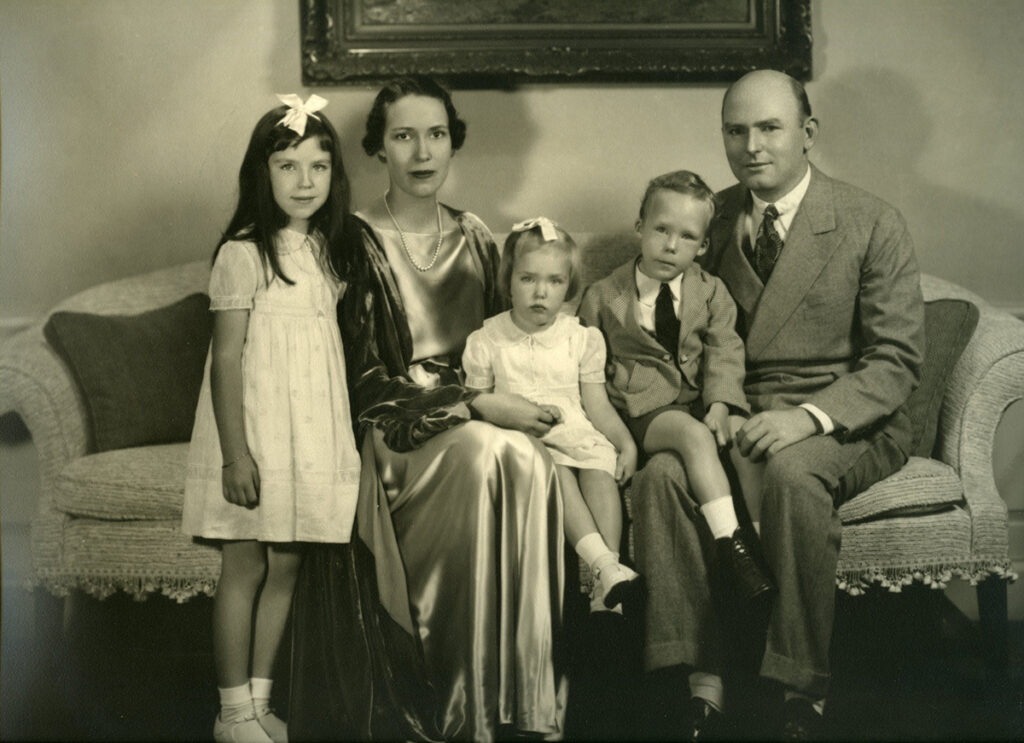
1934
Katharine and R.J.s daughter Mary (Katharine) Reynolds & her husband, Charles H. Babcock, purchased Reynolda House from Katharine’s remaining siblings and lived there with their three children.
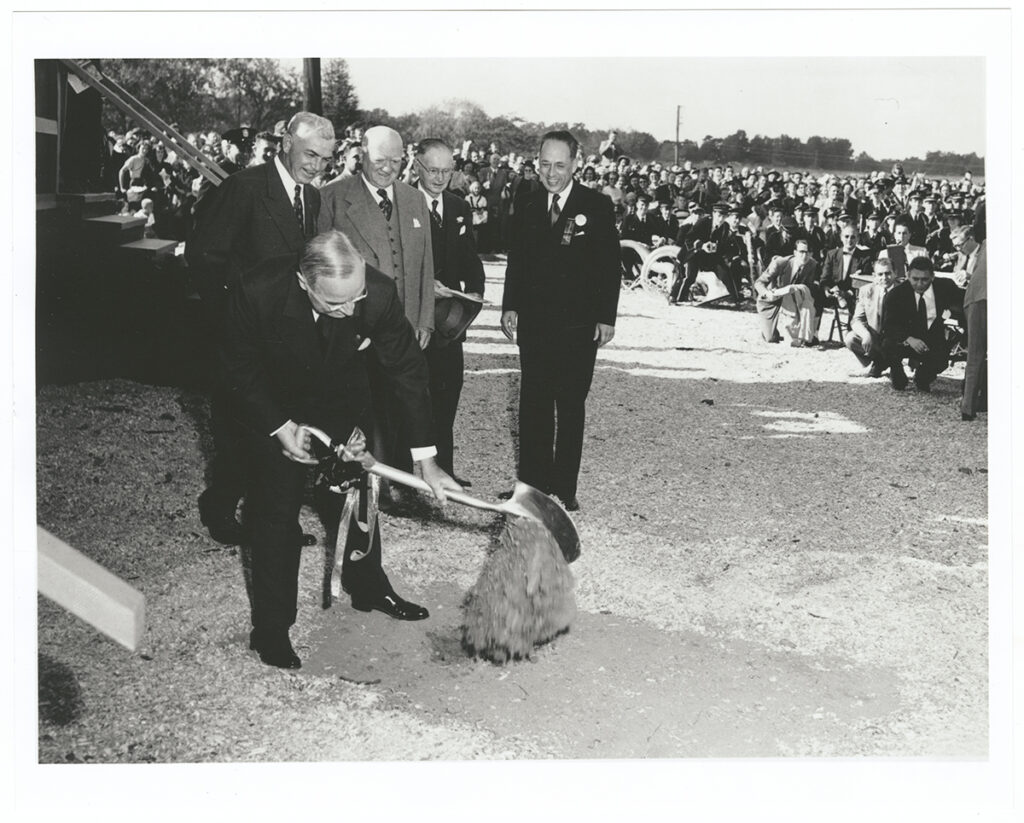
Mary Reynolds Babcock followed in the family footsteps and started the Z. Smith Reynolds Foundation, named after her brother, following his death in 1933.
Mary Reynolds Babcock followed in the family footsteps and started the Z. Smith Reynolds Foundation, named after her brother, following his death in 1933.
In 1946, Wake Forest College accepted an invitation from the Z. Smith Reynolds Foundation to relocate 100 miles west to Winston-Salem, NC. The land, 605 total acres, was donated by Mary Reynolds Babcock and her husband Charles H. Babcock. The new campus groundbreaking was held in 1951 with President Truman and the new Wake Forest campus opened in 1956.
Upon her death in 1953, the Mary Reynolds Babcock Foundation was established with $12M to “help people and places to move out of poverty and achieve greater social and economic justice.”
Today, the Z. Smith Reynolds Foundation and Mary Reynolds Babcock Foundations are estimated at over $500M combined.
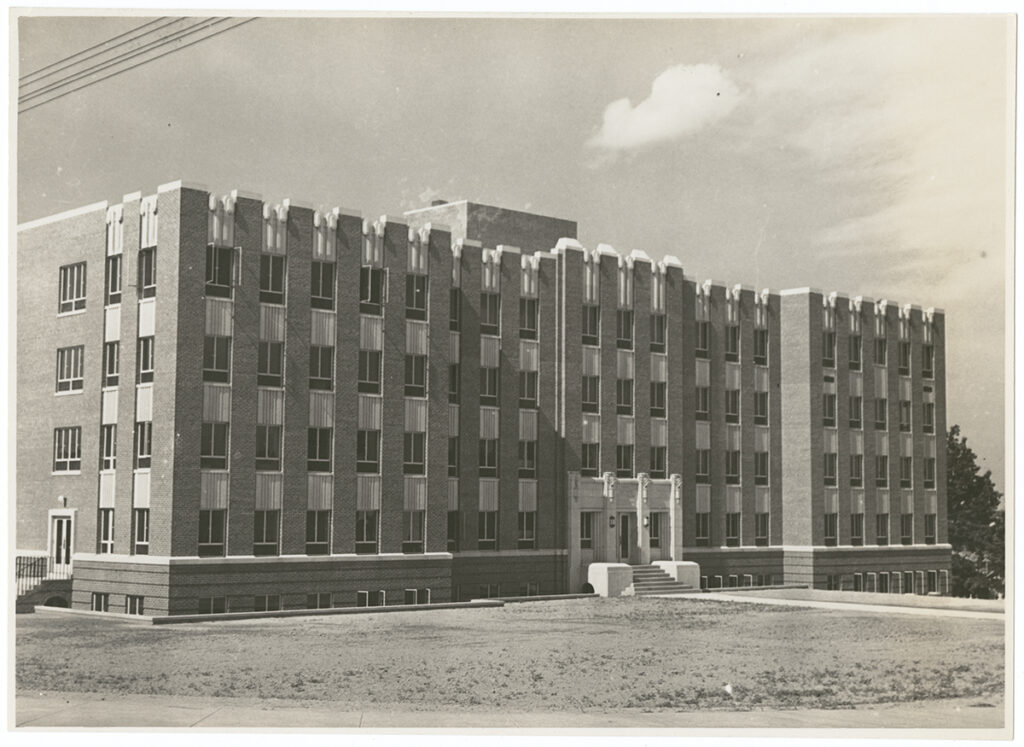
July 31, 1938
Kate Bitting Reynolds Memorial Hospital, affectionately known as the Katie B, was the first publicly-operated facility to treat only African-American patients in Winston-Salem. Before the Katie B., African American residents in need of medical attention had limited options, and African American doctors were barred from practicing at local hospitals.
Kate Bitting Reynolds Memorial Hospital, affectionately known as the Katie B, was the first publicly-operated facility to treat only African-American patients in Winston-Salem. Before the Katie B., African American residents in need of medical attention had limited options, and African American doctors were barred from practicing at local hospitals.
The Katie B. was several years in the making dating back to 1936, when Mayor W. T. Wilson proposed a hospital where African American doctors practice and provide more access to care of African Americans. The Board of Alderman (City Council agreed to a hospital when funding was secured, but there wasn’t enough raised for this new hospital. On November 11, 1936, William N. Reynolds gave the city $115,000 toward the hospital which would carry his wife’s name. When the Katie B was opened it had 100 beds. However, this was not large enough, and in 1940, Reynolds donated $75,000 for a 96-bed addition.
June 17, 1943
A Winston-Salem, NC tobacco worker strike, led by Local 22, of mostly African American and female workers fought for equal pay and rights. The strike started on June 17, 1943, in Plant Number 65. Local 22 encouraged increased political participation and was responsible for registering thousands of African American voters.
A Winston-Salem, NC tobacco worker strike, led by Local 22, of mostly African American and female workers fought for equal pay and rights. The strike started on June 17, 1943, in Plant Number 65. Local 22 encouraged increased political participation and was responsible for registering thousands of African American voters.
“The Local 22 movement forwarded the “Southern Front,” a loose coalition of labor unionists, civil rights activists, and southern New Dealers who saw a strong labor movement and the re-enfranchisement of the southern poor as key to reforming the South.”
In 1953, R.J. Reynolds Tobacco Company adopted an employee suggestion plan, the first major tobacco manufacturer to adopt an employee suggestion plan where workers were rewarded for their ideas.
1948
The personnel department developed gradually starting in 1919, and the Personnel Committee was formally established on April 13, 1948 – a move to oversee personnel, benefits, and safety.
Safety was a top priority, and R.J. Reynolds Tobacco Company had fewer accidents than the National Average of Tobacco Companies and the National Average of all Manufacturing Companies.
The personnel department developed gradually starting in 1919, and the Personnel Committee was formally established on April 13, 1948 – a move to oversee personnel, benefits, and safety.
Safety was a top priority, and R.J. Reynolds Tobacco Company had fewer accidents than the National Average of Tobacco Companies and the National Average of all Manufacturing Companies.
In 1953, R.J. Reynolds Tobacco Company adopted an employee suggestion plan, the first major tobacco manufacturer to adopt an employee suggestion plan where workers were rewarded for their ideas.
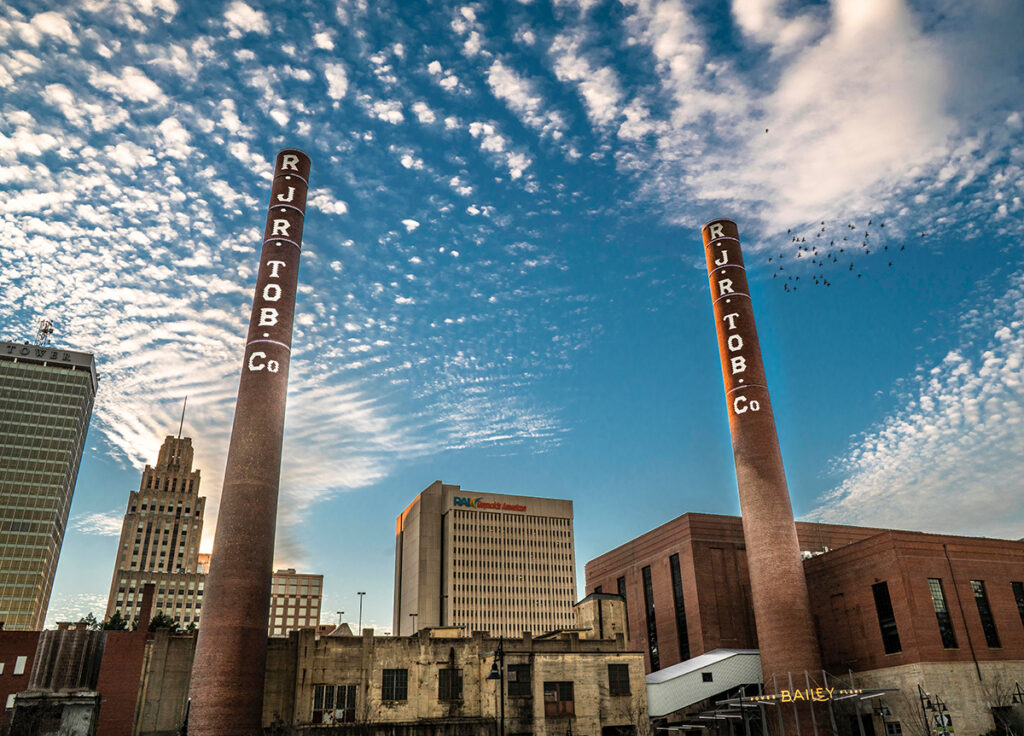
1949
Between 1947 – 1949, Bailey Power Plant was constructed to provide electricity and steam for R.J. Reynolds Tobacco Company. The 130-foot-tall iconic smokestacks still remain.
1948 - 1952
John C. Whitaker was the chairman of the board of the R.J. Reynolds Tobacco Company from 1952 to 1959. He was elected Vice President in 1939 and President in 1948.
John C. Whitaker was the chairman of the board of the R.J. Reynolds Tobacco Company from 1952 to 1959. He was elected Vice President in 1939 and President in 1948.
In honor of Whitaker, R.J. Reynolds Tobacco Company named the ‘state of the art’ manufacturing plant Whitaker Park. The plant opened in 1961 and was the world’s largest and most modern cigarette plant at the time.
In 2017, R.J. Reynolds Tobacco Company donated the 220-acre Whitaker Park complex for development to increase economic opportunities in Winston-Salem. The complex maintains the Whitaker name to this day.
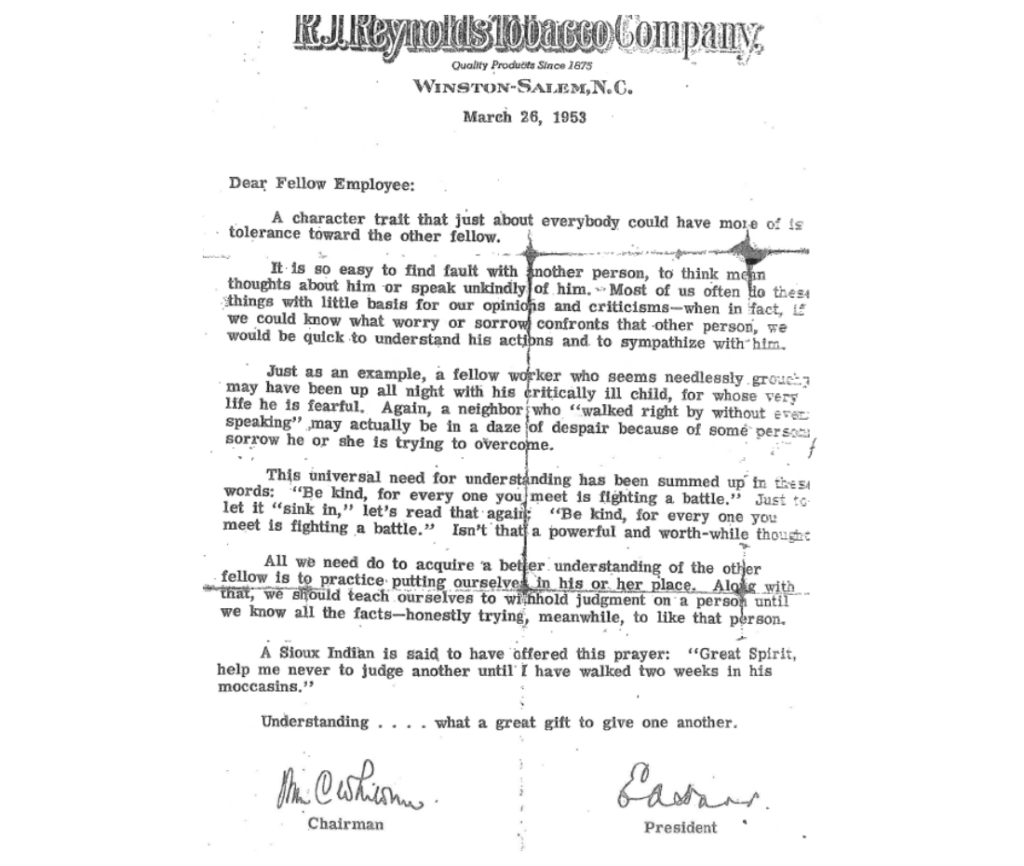
1952 - 1957
Edward Austin Darr was a significant figure a R.J. Reynolds Tobacco Company, serving in numerous roles from Assistant Secretary in 1920 through his time as the Chairman of the Executive Committee up until his death in 1958.
Darr was a key figure during the company’s expansion in the 1950’s including the introduction Winston Cigarettes in 1954.
1954
WINSTON filtered cigarettes launched a new era for R.J. Reynolds Tobacco Company and soon downtown manufacturing facilities lacked the capacity to produce enough cigarettes to meet demand.
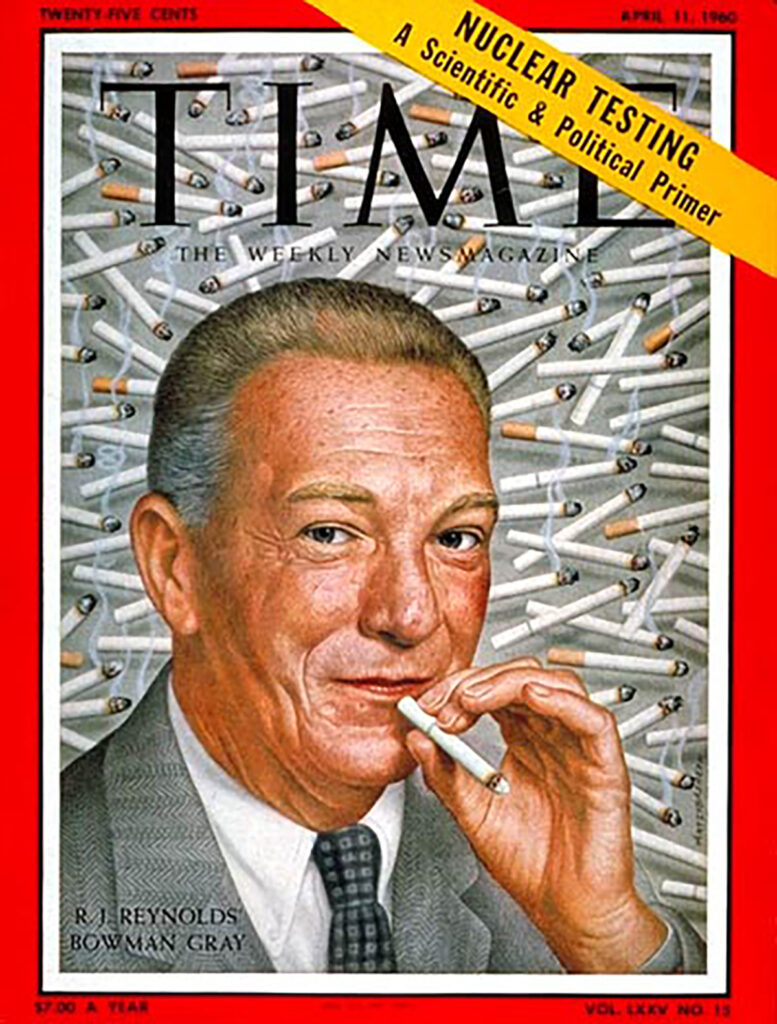
1957 - 1959
Bowman Gray, Jr. was the son of Bowman Gray and the last direct link to founder R.J. Reynolds.
Bowman Gray, Jr. was the son of Bowman Gray and the last direct link to founder R.J. Reynolds.
Bowman Gray, Jr. was born in 1907 to Bowman Gray, Sr. and Nathalie Lyons Gray. He grew up surrounded by the tobacco business and joined the R. J. Reynolds Tobacco Company full-time in 1930 as a retail salesman during his father’s time as President of the company.
Gray, Jr. advanced throughout the company holding roles as Assistant Sales Manager, Vice President in and Executive Vice President, before being named President from 1957 – 1959, when he became Chairman of the Board and Chief Executive Officer. Gray stepped down as CEO in 1967 and remained Chairman of the Board until his death in 1969.
Under Gray’s leadership, R.J. Reynolds Tobacco Company expanded sales, and during this time Winston became the third largest cigarette brand in the U.S. He was also responsible for introducing the LIFO (Last In First Out) accounting method to the business’s inventory management practices – although it did not go into effect until the late 1950’s.
Gray also introduced diversification into transportation and packaging firms – all which were acquired during his leadership. The company also expanded employee benefits in the areas of health care, retirement, education, profit sharing, and more during this period.
1960 - 1970
Alexander H. Galloway drove unparalleled growth and diversification. In 1969, the organization bought Sea-Land Industries, a containerized shipping business, and adopted a new corporate name for the parent company—R.J. Reynolds Industries.
1961
Whitaker Park opened as a desegrated facility, one of the most extensive actions a Southern industry took at the time, and desegregation spread through the rest of R.J. Reynolds Tobacco Company’s 115-acre industrial setup.
Whitaker Park opened as a desegrated facility, one of the most extensive actions a Southern industry took at the time, and desegregation spread through the rest of R.J. Reynolds Tobacco Company’s 115-acre industrial setup.
When completed, Whitaker Park was the “largest, newest and most modern cigarette factory” that:
- Included air-conditioning.
- Covered ~14 acres (large enough to accommodate 20 railroad cars under one roof at the same time)
- Featured parking for 900 automobiles.
- Accommodated 2,000 employees.
- Capacity to produce Winston’s at rate of 1,400 per minute
1964 - 1965
On January 11, 1964, the Surgeon General’s Advisory Committee issued a report on smoking and health. The Surgeon General’s Report led to the adoption of the Federal Cigarette Labeling and Advertising Act of 1965, which placed health warnings on cigarette packs.
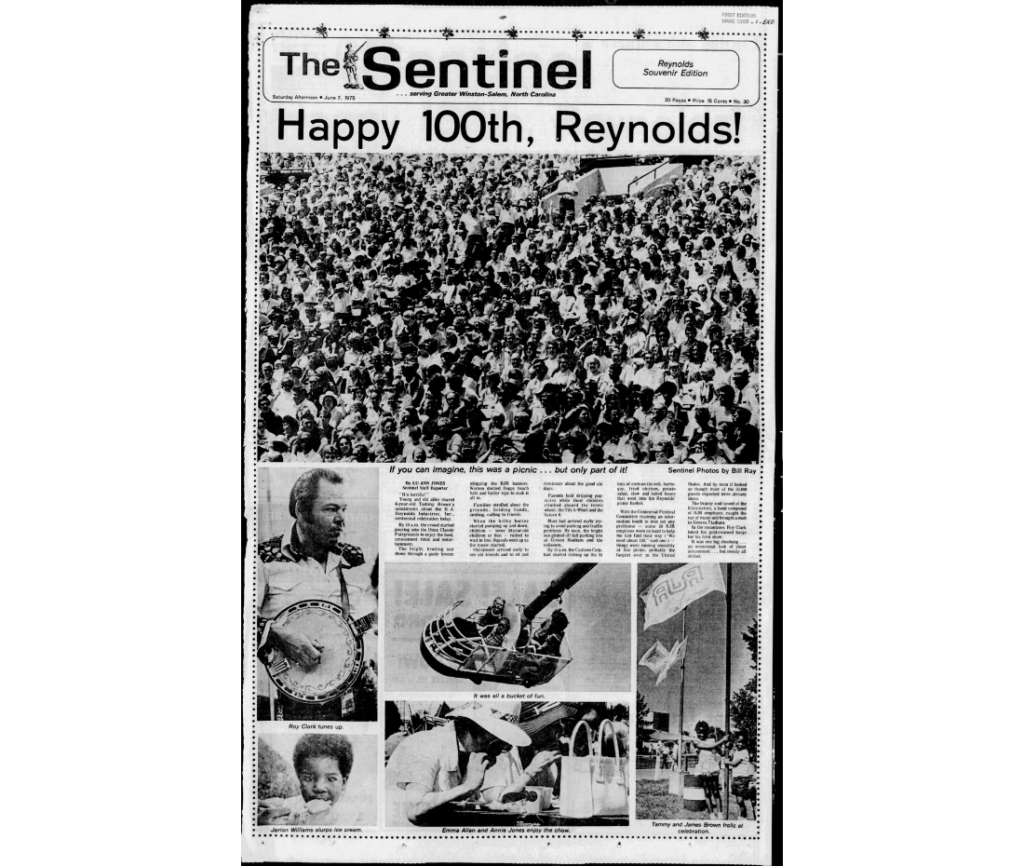
1975
Over 50,000 people attended R.J. Reynolds Tobacco Company’s 100th anniversary.

1980s
The company had outgrown Whitaker Park and invested $500 million in a state-of-the-art cigarette plant to be built in Tobaccoville, NC.
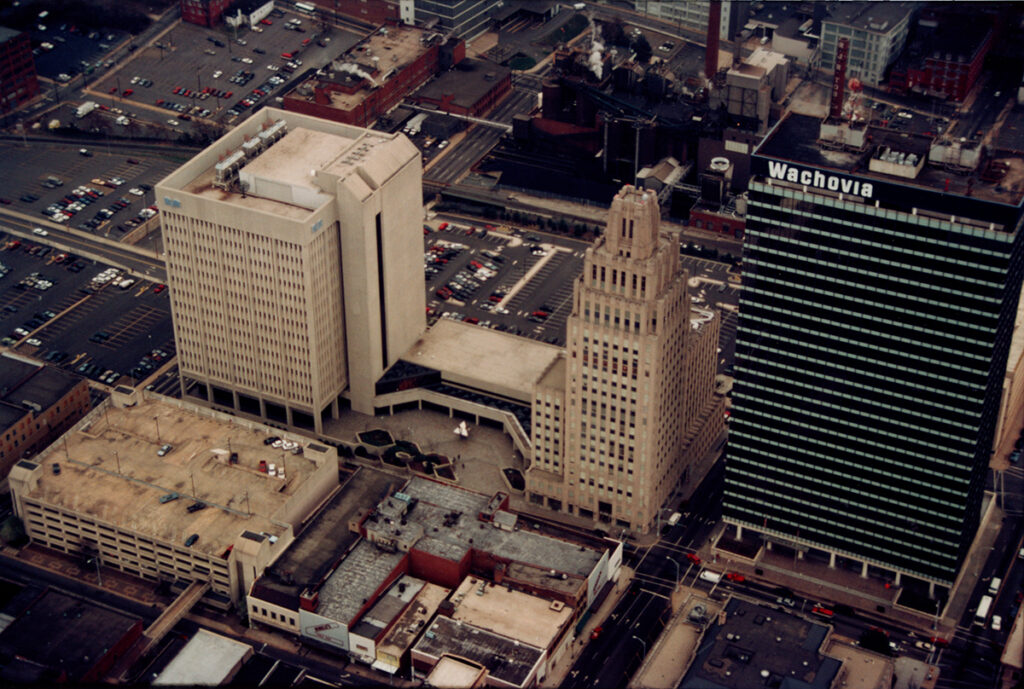
1982
The current R.J. Reynolds Plaza Building was completed adjacent to the original 1929 R.J. Reynolds Tobacco Company Building. The modernist design with a curtain wall façade and rigid concrete frame was scheduled to have a pair of skyscrapers that would have been the tallest in the Southeastern United States; however, the FAA ended this plan.
The current R.J. Reynolds Plaza Building was completed adjacent to the original 1929 R.J. Reynolds Tobacco Company Building. The modernist design with a curtain wall façade and rigid concrete frame was scheduled to have a pair of skyscrapers that would have been the tallest in the Southeastern United States; however, the FAA ended this plan.
In 2009, the R.J. Reynolds Plaza Building became the headquarters for R.J. Reynolds Tobacco Company and its parent company, Reynolds American.
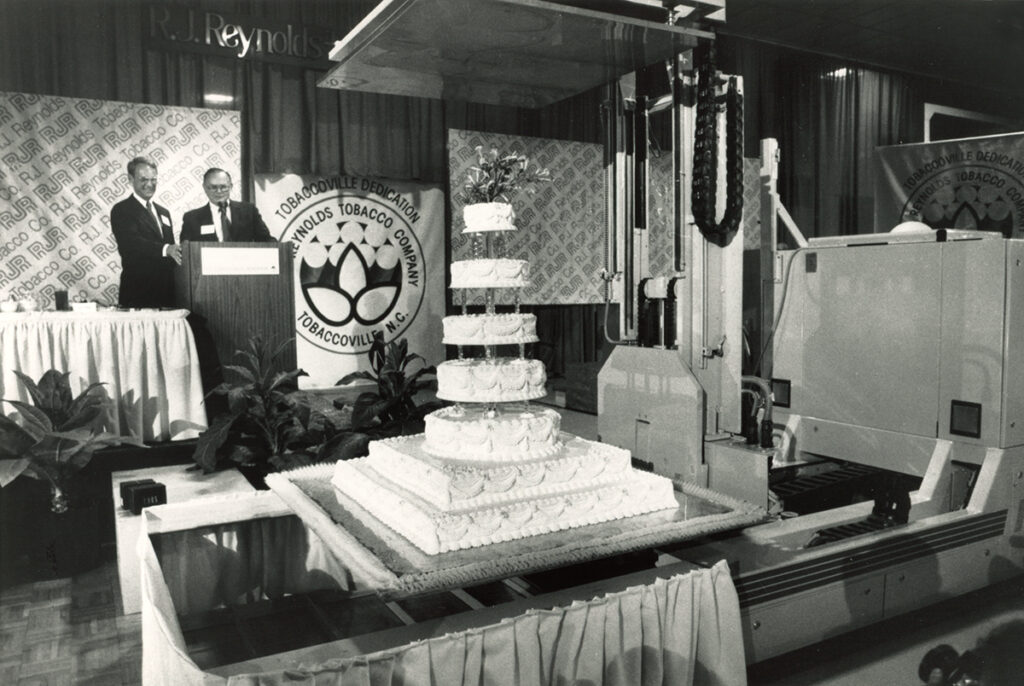
September 19, 1986
The R.J. Reynolds Tobacco Company dedicated the Tobaccoville Manufacturing Center (today known as Reynolds Operations Center).
The Manufacturing Center is situated on 614 acres, has 2 million square feet (46 acres) of finished-floor space. The 72 machine complexes could make and pack up to 10,000 cigarettes per minute.
1987
R.J. Reynolds Tobacco Company donated the 520,000 sq. foot world headquarters building to Wake Forest University.
R.J. Reynolds Tobacco Company introduced Premier, the first commercial cigarette that heated, rather than burned, tobacco.
1995 - 2004
Andrew J. Schindler was named President and CEO of R.J. Reynolds Tobacco Company and returned the corporate headquarters to Winston-Salem in 2002 following a corporate restructuring.

1995
R.J. Reynolds Tobacco Company is named as a founding member of We Card, a national non-profit supporting the prevention of age-restricted product sales to minors.
1998
The Tobacco Master Settlement Agreement (MSA) was entered on November 23, 1998, between the four largest United States tobacco companies and 52 state and territory attorneys’ generals.
2002
R.J. Reynolds Tobacco Holdings purchased Santa Fe Natural Tobacco Company (Natural American Spirit) for $340 million.
2004
Brown & Williamson Tobacco (B&W) merged with R. J. Reynolds Tobacco and forms new parent company Reynolds American Inc. The merger combined B&W’s brands, including Dunhill, Lucky Strike, Pall Mall, and Rothmans, with R. J. Reynolds’ brands, including Winston and Camel. B&W owner British American Tobacco (BAT) owned 42% of new parent Reynolds American after the merger.

Susan Ivey was the first woman CEO of a major tobacco company at Brown & Williamson. After the 2004 merger of B&W and R.J. Reynolds Tobacco Company, she was named President and CEO of new parent company Reynolds American Inc.
Susan Ivey was the first woman CEO of a major tobacco company at Brown & Williamson. After the 2004 merger of B&W and R.J. Reynolds Tobacco Company, she was named President and CEO of new parent company Reynolds American Inc.
Ivey delivered a new brand portfolio strategy including expansion into smokeless, spitless, and vapor products.
In 2009, Forbes ranked Ivey as the 59th most powerful woman in the world and was ranked 75th in 2010.
In 2010, she was ranked 22nd in Fortune magazine’s list of the 50 most powerful women in business.
2005
R.J. Reynolds Tobacco Company donates 40-acre downtown factory complex to the community, including nearly 3 million sq. feet of empty buildings.
2006
Reynolds American’s acquisition of American Snuff Company (then Conwood) expanded the organization’s portfolio to smokeless tobacco with brand rights such as Kodiak, Cougar, and Grizzly.
American Snuff Company’s history dates back to 1782 when John Garret II started to manufacture Garrett Scotch Snuff, nearly 100 years before R.J. Reynolds started his plug and twist business.
2008
R.J. Reynolds Tobacco Company introduced Camel SNUS, a dime-sized pouch of heat treated, not fermented tobacco that does not require the user to spit.
2011 - 2014
As President and CEO of Reynolds American, Daniel (Daan) M. Delen oversaw the launch of Vuse Solo in 2013 – gaining a 33% market share by 2015.
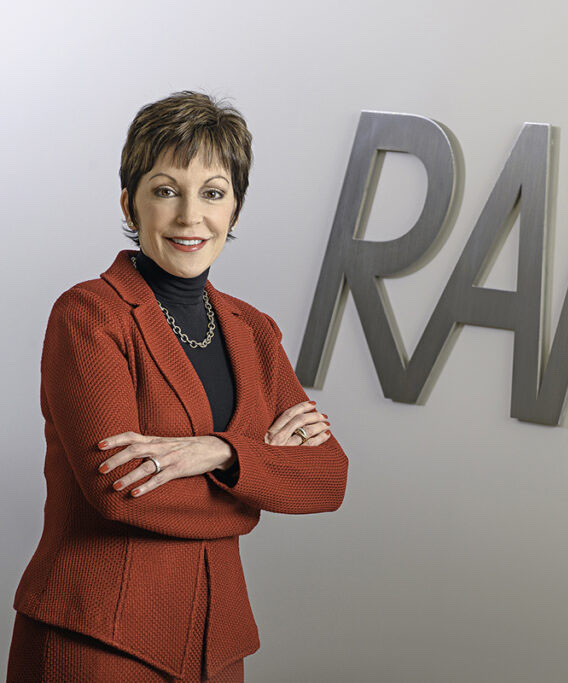
2014 - 2016
After spending several years in retirement, Susan Cameron re-joined the organization and ten weeks later announced the organization was planning to purchase Lorillard Inc and the Newport brand. The deal, which took place in mid-July 2014, was history-making: the acquisition is the largest to have been led by a woman at the time. In 2016, Cameron ranked 66 on the Forbes list of the 100 Most Powerful Women.
2014
R.J. Reynolds Tobacco Company obtained Newport and certain other Lorillard brands. As part of the Lorillard transaction, R.J. Reynolds Tobacco Company sold Winston, Salem, and other cigarette brands that had been part of building the company’s history.

2016 - 2017
In January 2017, Debra Crew replaced Cameron as president and CEO of Reynolds American – the first woman to succeed another woman as CEO of a Fortune 500 company.
2017
BAT agreed to acquire the remaining outstanding shares of Reynolds American, and R.J. Reynolds Tobacco Company and its affiliates would become part of the global BAT Group.
2017
The Reynolds American organization announced the donation of a significant portion of the Whitaker Park manufacturing plant for local redevelopment.
The U.S. Food and Drug Administration (FDA) issued Marketing Granted Orders (MGO) for Vuse Solo – The FIRST MGO for an e-cigarette from the FDA.

2022
The Reynolds American organization announced as a sponsor of TruAge – an innovative age-verification technology to aid in Underage Access Prevention.

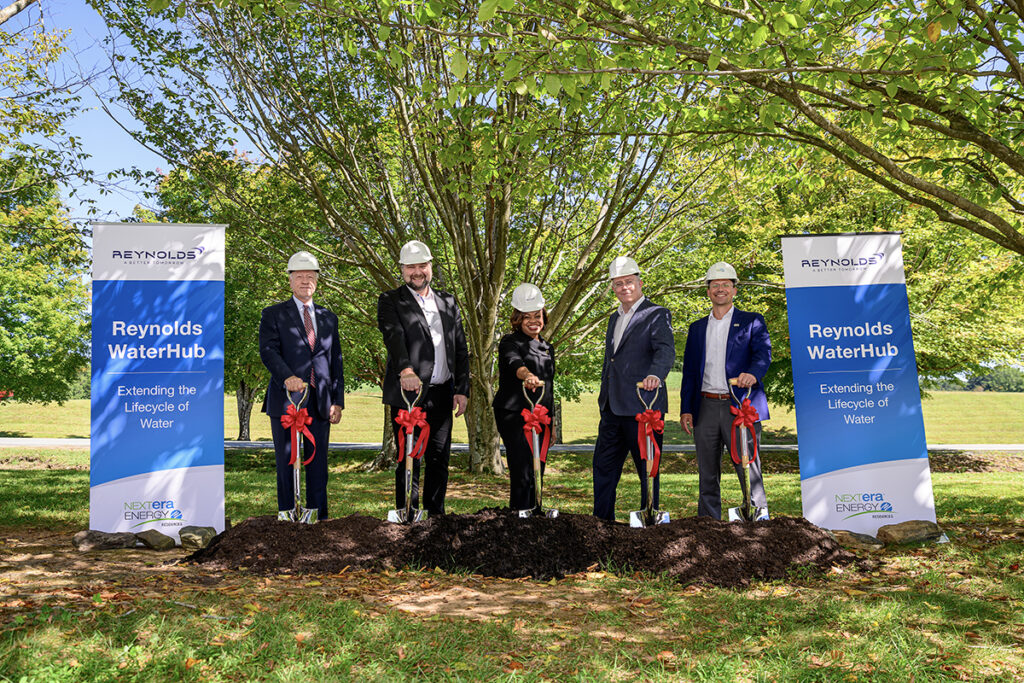
2023
The Reynolds American organization announced plans for Advanced Water Recycling Facility at Tobaccoville, NC Operations facility.
2023
The organization celebrated 100 Years of partnership with United Way of Forsyth County.
2024
The U.S. Food and Drug Administration (FDA) issued Marketing Granted Orders for Vuse Alto Golden and Rich Tobacco flavored products.
2024
David Waterfield, Reynolds American President and CEO, rolled out The Way Forward – Our Path Towards A Better Tomorrow ™.
2025
After hiring for over 500 jobs in 2024, the Reynolds American organization is in the process of hiring for an estimated 300 more jobs in 2025—including a combination of local manufacturing and national trade marketing roles in Winston-Salem, N.C., Tobaccoville, N.C., and across the U.S. The jobs align with the organization’s efforts to expand its smokeless portfolio.
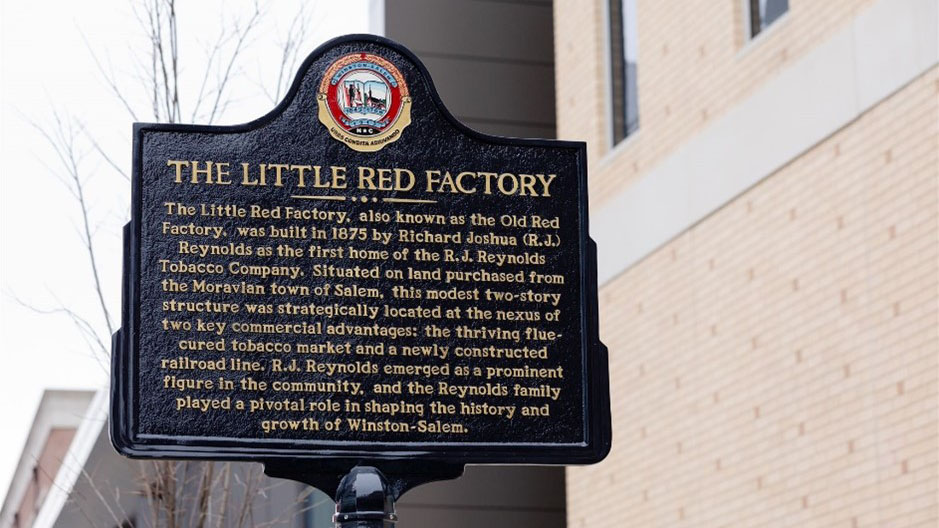
February 11, 2025
Winston-Salem elected officials, business, and community leaders joined representatives of the Reynolds American organization to mark the 150th anniversary of the R.J. Reynolds Tobacco Company with the unveiling of a historic marker at the site of “The Little Red Factory,” the original production facility where Richard Joshua (R.J.) Reynolds started the R.J. Reynolds Tobacco Company in 1875.
To acknowledge this significant milestone, Winston-Salem Mayor Allen Joines issued a proclamation declaring February 11, 2025, as Reynolds 150th Celebration Day in Winston-Salem. This recognition celebrates the organization’s long-standing presence and contributions to the local community, Triad region, and the state of North Carolina.

March 17, 2025
The New York Stock Exchange (NYSE) welcomed the Reynolds American organization in celebration of R.J. Reynolds Tobacco Company’s (RJRT) 150th anniversary.
To honor the milestone, the Reynolds American Leadership Team rang the iconic Opening Bell®.
The special occasion commemorated RJRT becoming a NYSE publicly listed company on March 16, 1922, using the company’s founders’ initials, ‘R.J.R.,’ as the ticker symbol.
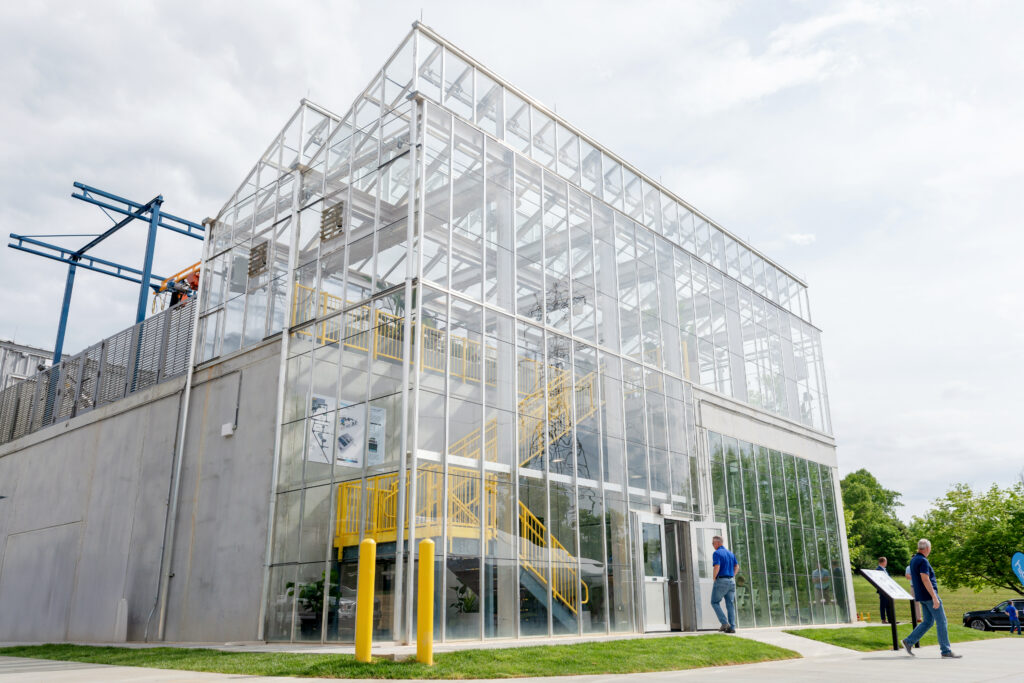
April 22, 2025
The Reynolds WaterHub® officially opened at the Reynolds Operations Center in Tobaccoville, N.C. The WaterHub® is an advanced water recycling facility and product of H2O Innovation, projected to reclaim more than 60 million gallons of water a year—equivalent to the annual water supply of approximately 550 average U.S. households—reducing the Reynolds organization’s environmental impact.
The information provided on ReynoldsAmerican.com is for general informational purposes only. While we strive to ensure the accuracy of the information, Reynolds American, Inc. makes no representations or warranties regarding the completeness or accuracy of the content. Any actions you take based on the information on this site are strictly at your own risk. For professional advice, please consult with a qualified expert in the relevant field. For specific inquiries, please contact mediaoffice@rjrt.com.
